Graduating from high school was an amazing achievement for me. As was the day my wife and I got married in 2002. What a glorious day that was! Looking back, my wife and I chuckle at how we were babies compared to the adults we are now. We had 2 beautiful kids, a son and a daughter. We attended the LDS church sometimes and both kids were baptized in the Mormon faith, but that was as far as it went. I got a job in the oilfields as a journeyman pipefitter and worked there for 15 years. The job was physically and emotionally stressful. I began drinking to cope with pain from injuries and trauma from accidents I witnessed. It was all part of the ‘oilfield culture’. Because I was gone from home for long stretches of time, I struggled with a new addiction: pornography. In 2013, I was arrested for drunk driving. I don’t remember much, but I do remember the amount of heartache and money it cost my family. This almost destroyed my marriage. So, I decided to get sober. I have a lot of regrets about this period of my life, but the two biggest are that I didn’t get to enjoy my kids growing up and I was a terrible husband. God bless my wife (we have been married 22 years) for being such a strong and wonderful woman. Eventually, I lost my job in the oil patch due to the industry downturn. I got a job in Medicine Hat, which meant our family was finally together. My desire for pornography lessened but didn’t stop. COVID arrived, and it was hard on our teenage children, especially my son, who fell down the wrong path. He dropped out of school, and there seemed to be total disorder in our home. In June of 2023, when my son got into serious trouble, I felt that I failed as a husband, a father, and a human being. It was a very low point in my life.
Written by Ray, a parishioner of St. Patrick's, Medicine Hat. Abridged by Alice Matisz. Photos courtesy of Ray and St. Patrick's Parish. For the unabridged story, email [email protected] for a copy.
0 Comments
In the spring of 2024, the renewal team led the Pastoral Renewal Survey in our parish. Since we had surveyed our parish twice in the past year, we were familiar with the process. We quickly assembled our team and surveyed the parish using the diocesan Pastoral Renewal Survey. The ELCPAP project spawned several committees to carry out its recommended strategies. Most of our Parish Renewal Team has been added to the Unity Committee. This committee is tasked with creating a plan to guide cultural change in order to strengthen parish unity. The Diocesan Renewal Leadership Team has been a great support during our winding journey. At the recent Provincial CWL convention, Bishop McGrattan explained our Diocesan Renewal Process. A CWL member from another diocese questioned the Bishop about the support given to the parishes. I was able to explain to her further, explaining the various supports that we have been given. One of the supports I enjoy is the monthly #Renewal Zoom Lunch and Learn meetings. They are a great way to hear what other parishes are doing and ask questions of the Diocesan Renewal team. We always get the message that; We are Called, We Matter, and We Belong. This summer, All Saints Parish will hold several parish BBQs. By uniting over a shared meal, we can get to know each other and celebrate our faith. Our renewal team looks forward to hearing the results of the diocesan survey in the fall. Will our ELCPAP surveys help us focus on the themes that the diocesan survey identifies? Perhaps the two roads will converge for a while. In any case, All Saints Parish will continue to follow its winding road to renewal and unity.
Last June, hundreds of parishioners at Our Lady of Fatima Parish in Calgary were bursting with joy and colour as they celebrated the Feast of the Lord Holy Christ of the Miracles. Fr. Fabio De Souza, pastor of Our Lady of Fatima, shared, "This feast is very prominent in Portugal. Some even travel back to Portugal or visit for this festival because of its huge significance." For those who are new to this cultural celebration, keep reading. The Monastery of Our Lady of Hope The island of São Miguel, part of the Azores archipelago, is rich in faith, cultural heritage, and historical landmarks. One of its most iconic representations is the revered Ecce Homo, known locally as Senhor Santo Cristo dos Milagres, or Lord Holy Christ of the Miracles in English. Carved in the early 16th century, this venerated image was a gift from Pope Paul III to two nuns who traveled to Rome to obtain the Bull for the foundation of São Miguel's first female monastery. Located in Ponta Delgada, Azores, the Monastery of Our Lady of Hope houses a striking wooden bust of Jesus Christ, depicting Him during the Passion. This remarkable statue is known for its profound facial expression and the exquisite craftsmanship of its adornments, which include various precious stones. The devotion to Senhor Santo Cristo dos Milagres gained significant momentum in the 18th century thanks to Mother Teresa de Jesus da Anunciada and has since spread across the Azores and worldwide, including Europe, Central and South America, as well as the United States and Canada. Major Religious Festival Senhor Santo Cristo dos Milagres is the focal point of the largest religious festival in the Azores and the second largest in Portugal, surpassed only by the Festivities of the Sanctuary of Fatima. This annual celebration attracts pilgrims and visitors from around the globe, especially immigrants from the U.S. and Canada, highlighting the deep faith and cultural traditions of the Azorean people. Devotion in Calgary This devotion was brought to Portuguese parishes in Canada by Azorean immigrants, making it, alongside the Feast of Our Lady of Fatima, one of the most important celebrations for Portuguese-Canadians. "At least 100 people from Edmonton also came to our parish to celebrate this feast," shared Fr. Fabio. "This feast attracts even those who don't usually attend Mass in our parish. They come for this feast because it's the most important devotional event for them, embedded in their culture." After Mass, the faithful gathered outside the church to join the procession, followed by a social gathering in the Parish hall, complete with traditional Portuguese finger food. At Our Lady of Fatima Parish in Calgary, the festivities have been organized by the Confraternity of the Lord Holy Christ of the Miracles since 2014. This group promotes the religious celebrations, procession, and social events, attracting many Azorean faithful, including those from places like Edmonton. These gatherings help preserve the Portuguese heritage in Calgary. In this season of Renewal, the festivity highlighted the importance of a sense of belonging, one of the key pillars of Diocesan renewal. "For this event, volunteers came together and invited everyone to join the festivity. With this cultural event, we as a parish attract so many people, including the unchurched," shared Fr. Fabio. The parish is already hoping to hold this celebration in both Portuguese and English to be welcoming to even more people in their parish and beyond. Submitted by Our Lady of Fatima Parish. Photos courtesy of Our Lady of Fatima Parish.
My earliest memory of St. Bonaventure Parish dates back to before the church was even built. It was just a grassy field, and across the street, we celebrated Mass at St. Bonaventure School. As a child living in the community of Parkland, we attended Mass every Sunday in the gymnasium. Being so young, I thought it was incredibly cool that church was held in a gym. As luck would have it, years later, I would attend that school myself. Fast forward almost 20 years. I was newly married, and my husband Tony and I had just had our first child. We lived in Northeast Calgary, but we knew we wanted to have our baby baptized at St. Bonaventure, where I had celebrated most of my sacraments. We took our four-day-old baby boy to Sunday Mass, and afterward, we instantly knew that this church and its parishioners would become part of our “family.” After my daughter was born and I became a stay-at-home mom, I joined the St. Anne’s Mother’s Group in the parish. I felt called to be with other Catholic women and mothers, and to get to know my faith better. There was babysitting for my kids, so it was a time of gentle peace with like-minded women. We bonded over our faith, our families, a few family recipes, coffee, and some good old-fashioned girl talk. Several years later, I was still enjoying the Mother’s Group, as it was my two hours of time to myself while my kids were at preschool. One day, I needed a pen, so I decided to stop by the parish office to see if I could borrow one. I noticed the parish secretary seemed run off her feet, moving from desk to desk as though she was doing 20 things at once. Jokingly, but also casually looking for a part-time job, I asked if she was hiring. I remember the look on her face; it was as if I had just been the answer to her prayers. She responded, “Yes, as a matter of fact, I am. Are you up for an interview with me and Fr. Bill?”
Written by Michelle Fraser for Faithfully. Michelle has been the Sacrament Coordinator at St. Bonaventure Church for over 22 years. Michelle and her husband Tony are native Calgarians with two grown children. She volunteers at the parish as ministry coordinator for Art & Environment and the Hospitality Ministry. She enjoys travelling with her husband and bicycling. Photos courtesy of Lance Dixon and Michelle Fraser.
With prayer and the Holy Spirit as our guide, we made progress. Parishioners were introduced to and informed about the Pastoral Renewal and its importance through pulpit announcements and email updates. Posters were also put up, including some of our own, which were made on very bright paper to ensure they were not missed. When it came time for the survey in June, we hit the ground running. Promotion of the survey was approached the same way as the Renewal information was shared, with pulpit announcements, information, and reminders via email and posters. On Corpus Christi Sunday, June 2, 2024, we adopted the process of not having the procession after the final blessing at Mass (this had been noted to parishioners in shared information before June 2nd) to give time for survey completion. Father Silvano asked all to stay after Mass and complete the survey, which he noted was not mandatory, but greatly encouraged. All parishioners listened, and we had a great response. We received everyone's completed surveys on the first Sunday of the Survey. Our aspirations and goals had been met, above and beyond, in one Sunday gathering! St. Mary’s parishioners have a deep dedication to our church and to the parish as a community. Their support is unsurpassed when it is needed and asked for! Everyone definitely came together to help achieve a successful end result with the Renewal survey—each and every parishioner is to be commended! We will await the survey results, which will be sent to our parish, as these will continue to guide us on the path of the Renewal process. When the results are received, they will greatly aid us in identifying the areas we need to focus on and address moving forward. The Renewal team will review the results and then present the information to the parishioners, gathering feedback as the journey continues. Although at the beginning, the needs for and presentation of the survey were a tad daunting, prayer, the Holy Spirit, and St. Mary’s parishioners reign supreme! Written by Elaine Carley, Parish Renewal Team chair of St. Mary's Parish in Beiseker. Photo credit: Town of Irricana.
On June 7-9, 2024, the Sacred Heart Parish in Calgary held the 40 Hours of Adoration for Vocations. This prayer gathering was a testament to the unwavering faith and devotion of the parish community to the importance of vocations to the priesthood and religious life within the Diocese of Calgary. The parish community responded enthusiastically. Many parishioners participated in the adoration, taking turns spending time in prayer and meditation. This collective effort demonstrates the deep commitment of the Sacred Heart Parish to supporting and nurturing vocations, which are crucial for the growth and vitality of the local Church. Through this prayer initiative, the parish fostered an environment of prayerful support and encouragement for those discerning a religious vocation. We are thankful for the success of the 40 Hours Adoration for Vocations, and the active participation of the parish community. It was truly a strong testament to the community spirit that thrives within our parish. Written by Fr. Arjay Arbanto, pastor at Sacred Heart Parish, Calgary. Photos courtesy of Sacred Heart Parish.
We are truly blessed! Thank you to all who participated in the Survey!
An incredible 19,000 parishioners from across the diocese participated in the survey, demonstrating a belief in the importance of Renewal in their faith life and thatof the parish community. We look forward to sharing the many insights gained from the survey results, which will help us understand our greatest strengths and opportunities for growth on our path to Renewal. Special thanks to diocesan and parish staff for their hard work! Our collective efforts in promoting and facilitating the Survey in every parish community made a significant impact and allowed us to truly hear the voice of our parishioners. What next? Here's a look at the key milestones prepared by the Diocesan Renewal Leadership Team as we move forward to the second year of our Renewal journey:
Priest Assignment; Deacon Assignment; Clergy Personnel Announcements; Pastoral Assignment; Priests Move
This spring and summer, our parishes are joyfully welcoming families into the sacramental life. We ask for your continued prayers for the youth across the diocese as they receive their Sacraments of Christian Initiation, particularly First Communion and Confirmation. We also extend our gratitude to Bishop Jon Hansen (see photos below) from the Diocese of Mackenzie-Fort Smith for assisting Bishop McGrattan with Confirmation Masses in some of our parishes. Photos courtesy of Bandi Szakony (St. Joseph's Parish, St. Anthony's, Parish, St. Francis de Sales Parish), Victor Panlilio (Canadian Martyr's Parish), and Maria Hernandez (St. Mary's Cathedral, Calgary).
In April, Holy Spirit Parish hosted a 40 Hours Adoration for Vocations, drawing an impressive number of participants and receiving overwhelmingly positive feedback. "The number of people registered through the 40 hours Adoration was 378," Pauline Jensen, Adoration coordinator, shared, "However, I would put that number up and over 500 as many did not register either from this parish or other parishes. There were many new faces and I surmise the notice on the Diocesan website was instrumental in appealing to those wanting to attend an Adoration at certain hours." This prayer event is a part of the broader diocesan initiative. In his letter promoting the 40 Hours, the Bishop emphasized, "In the spirit of our Diocesan Renewal, I wish to promote the 40 Hours Devotion for Vocations in the Diocese of Calgary. This Devotion is a longstanding tradition of forty hours of continuous prayer before the solemn Exposition of the Blessed Sacrament in a succession of churches for special intentions. In the Diocese of Calgary, the special intention will be for vocations to the priesthood and consecrated life." Pauline noted that the event ran smoothly without any issues, thanks to the help of their dedicated volunteers. "The night hours went well," she said. "The Knights arrived at midnight and were in the chapel when I arrived at 7 am." Special prayer sessions marked the devotion. "On Saturday, the Spanish community led the rosary at 5 pm, and the prayer group at 6 pm," Pauline mentioned. Additionally, the Divine Mercy prayer was recited at various intervals throughout the 40 Hours. Feedback from participants was overwhelmingly positive, with many describing the experience as "calm, peaceful, holy" and expressing eagerness for future events. "When can we do this again?" was echoed by many attendees. Fr. David Meadows expressed his gratefulness for the prayer, stating, "Our 40 Hours Adoration for Vocations was a great success. I was impressed by the number of people, and their enthusiasm." The 40 Hours Devotion for Vocations at Holy Spirit Parish not only demonstrated the strong sense of community within the parish but also highlighted the power of collective prayer and devotion. As the Bishop underscored Matthew's Gospel passage in his letter, “The harvest is plentiful, but the labourers are few; therefore ask the Lord of the harvest to send out labourers into his harvest” (Matt. 9:37-38). He added, "Through this initiative of the 40 Hours Devotion for Vocations, we will in time see the fruits of our prayer as the Lord sends out labourers into his harvest, including into the local church of the Diocese of Calgary."
Submitted by Deacon Greg Barcelon, Parish Renewal Team, St. Mary's Cathedral
In the intricate dance of community engagement, one often encounters unexpected challenges and opportunities. This was precisely the case for St. Mary's Cathedral parish as we embarked on facilitating the Diocesan Pastoral Renewal Survey. Conventional wisdom will tell us that "Strategic" would not come out as one of the top.3 leadership traits listed under Question 15 of the survey. This revelation sparked our curiosity and drove us to delve deeper into thinking strategically. However, before we could delve into details of our strategy, we had to address a pressing concern: how to incentivize participation and ensure that the survey resonated with our parishioners. Understanding the age-old question of "What's in it for me?" was pivotal. With meticulous planning, we tailored our approach to emphasize the tangible benefits of participating, from shaping the future of our parish to fostering a sense of belonging and ownership. Then, we realized we faced a significant hurdle, i.e., the clash between the prescribed June 1/2 survey weekend and the much-anticipated Lilac Festival in the vicinity of the Cathedral. Recognizing the potential impact on attendance, we sought a solution that would accommodate the schedules of our parishioners. Thanks to the advocacy of our Rector, Fr. Avinash, we secured a postponement, allowing us to have a better chance at success, plus it afforded us to observe best practices from other parishes who were doing the survey one week ahead of us. Drawing from this observation period, we refined our approach with three strategic pillars: proactive engagement before Mass, integration of the survey into homilies, and innovative distribution methods to ensure simultaneous participation. These tactics not only streamlined the survey process but also fostered a sense of collective responsibility and engagement among our parishioners. However, our efforts did not end with tapping our regular Mass-goers. We recognized the importance of reaching out to every corner of our parish community, including newly registered parishioners, volunteers of various ministries, parish groups, parents of sacramental preparation classes and newly initiated RCIA attendees. Leveraging digital platforms and personalized communication, we cast a wide net, inviting all voices to contribute to our collective narrative. Looking ahead, our focus shifts to rekindling connections with those who have drifted away from the fold. We envision a grassroots movement where every parishioner becomes an ambassador, reaching out to friends and family members who may have lapsed in their attendance. It's a testament to the power of community-driven initiatives and the collective strength of a unified parish. In closing, we extend our heartfelt gratitude to all who have contributed to this endeavor, from our dedicated Parish Renewal Team to the countless volunteers and parishioners who recognized the value of our survey. Together, we have embarked on a journey of self-discovery and renewal, paving the way for a blessed future for our beloved parish. Rewind to June 2023. Out of pure luck, I saw a posting for a teaching position with Christ the King Academy, a middle school in the same small town where I lived. I happened to know the vice principal, Errin Nelson, and took a chance and emailed him to ask some questions. Fast-forward to the end of that week, and I had accepted a brand-new teaching position in another school division! I was leaving my home division, which brought me to Alberta in 2011. Scared? A little. Excited? Definitely. I felt in my heart that I was called to make this big change. My daughter, Anna (8), joined me. She and I are glued at the hip, and she wanted to move to Holy Family Academy to remain close to her momma. This is when I began to notice incredible divine intervention. It sounds so strange to say out loud, but there is no doubt in my mind that I was called to this position. Several signs appeared over the next little while that made me know for certain I had made the most incredible choice. Jumping forward again, I learned about RCIA, which was going to begin in October. I have always had a ton of questions and often wondered if there was 'more'. Out of my personal and very private fear of death, which only grew stronger once I became a mother, I reached out and signed myself and my daughter up. Once my journey of learning about the Catholic faith began, I have not looked back. One particular example illuminated for me was this; my classroom saint is St. Joseph; I was born in Saint Joseph's Hospital in Hamilton, Ontario; and my grandfather's name was Joseph. This Easter, my incredible daughter Anna and I were baptized and fully initiated into the Catholic Church at St. Mary's in Brooks. We were baptized together and received the Sacraments. My heart is so full and so incredibly grateful to several amazing people who have made me feel more like a family than I can ever express.
The teachers and staff of CTK welcomed my daughter and I with open arms. I am forever grateful and will hold the CTK and Christ of the Redeemer School Division families in my heart and prayers forever. Submitted by Sarah Parkin, Teacher at Christ the King Academy. Photos courtesy of Sarah Parkin.
While they were talking and discussing together, Jesus himself drew near and went with them. But their eyes were kept from recognizing Him." ~ Luke 24:15-16 This was a passage that many parishioners, who participated in St. Albert the Great’s Parish Renewal Gathering on May 4, 2024, pondered deeply and discussed heartfully during the Lectio Divina. One parishioner said, “How many times do we fail to recognize Jesus in one another? Yet He is with us all the time.” Another one expressed, “we were given the beautiful gift of sight, but we often close our eyes and fail to see the beauty of Jesus present in us.” Last Saturday’s gathering at our parish was indeed an eye-opener for many of us. While in the facade of our beautiful church we seem lively and vibrant, and indeed we are, there are areas we may be failing to recognize in our parish community. It could be families struggling in their relationships, our youth getting lost in their paths, our young adults who don’t know where to start, friendships strained and broken by past hurts, the elderly who may have been forgotten, or even one’s struggles with work in a weakening faith life. These are some of the “things” that are happening in the lives of parishioners. When Cleopas answered Jesus, “are you the only visitor to Jerusalem who does not know the things that have happened there in these days?” Jesus replied, “What things?” Well, we can talk to Jesus and tell Him, Lord these are the things! Very quickly, Jesus will probably tell us how foolish we are because it is necessary for those things to happen so “He can enter into His glory”. In another small group conversation, a parishioner reflected on the presence of sufferings in our lives as a way of God to reveal His glory. “What’s important is to know that we are not alone and that we have Jesus and the entire community to walk with us in our journey and the sufferings that come with it. It is comforting to know that I have a home and that if I experience some suffering, I have an entire community that prays for me.” That hits the note!
What a great day it was for our parish, you can strongly sense the Holy Spirit’s presence. “I didn’t know what to expect for attendance, but everyone’s presence here is truly a blessing to our parish. St. Albert the Great parishioners are the best!”, said Fr. Andrew who gave his full support and guidance throughout the planning of the gathering. When asked what his vision is for the Renewal, he said, “my goal is for everyone in the parish to call this home.” Sounds like we are on the right track! The journey to Renewal is long and not easy. Bishop McGrattan said and was quoted many times throughout the gathering, “Renewal is not a sprint, but is a marathon.” St. Albert the Great is gearing for it! As a renewal team member said, it is not an 8-member team but an entire parish that will run the marathon. To affirm that, everyone in the gathering expressed their enthusiasm when the word You was changed to We, as they exclaimed, “WE are Called, WE Matter, and WE Belong!” Thank you Jesus! Submitted by Florian Bernardo, St. Albert the Great Parish Renewal Team.
How did Christianity prosper when it was powerless, ridiculed, and persecuted? Early Church historian Henry Chadwick attributes Christianity’s quick spread to women because of Christianity’s belief in the equality of women and men before God. True, in the early years of the first millennium Christian women were still constrained to the social roles of homemaker and wife, but Christianity elevated the status of women through its doctrine that all are created in God’s image and redeemed by Christ, meaning all must treated with respect and dignity. The long-standing importance of women evangelists in the Church was visible in Medicine Hat during the 100-year anniversary celebration of the Catholic Women’s League (CWL) of St. Patrick’s Parish on Saturday, April 27th, 2024. A century after the chapter’s founding, Bishop McGrattan called CWL a gift to the Church and the community because of CWL’s constant witness, faith, and service. CWL remains steadfastly committed to social justice by promoting life from conception to its natural end. As current St.Patrick’s CWL President Anne Helfrich proudly proclaimed, “since 1924 the CWL chapter of Medicine Hat has helped women grow in faith by being the hands of Jesus.” Michelle Bien, a CWL member who joined two years ago told me, “CWL is for me. CWL fills a niche that nothing else does; it filled a gap in my life I didn’t even know was missing.” This succinctly expresses the heart of the diocesan renewal’s promise of You are called; You matter; You belong. St.Patrick’s CWL chapter creates a vibrant and radiant parish life by actively caring for the parish and the greater community of Medicine Hat by fundraising for charities like the Ronald McDonald House, Salvation Army, and the Mustard Seed, giving away clothing to those who need it, teaching children how to pray the rosary, and providing scholarships to students of Catholic schools. Bishop McGrattan’s homily at the celebratory Mass and his speech to over 100 CWL members and guests at the dinner following, discussed how lay movements witness daily to the Church’s call to charity by, “Taking out of the storehouse what is good and bringing it forth.” Bishop McGrattan concluded by issuing a challenge to grow vocations throughout the diocese by committing to 40 hours of Eucharistic adoration because Eucharistic adoration will be the most efficacious approach to diocesan renewal. As I listened to the legacy of this vibrant CWL chapter and Bishop McGrattan’s message for renewal, I was reminded of another woman who sparked a Catholic renewal – St. Juliana of Mont Carillon – a Flemish nun instrumental in establishing the Feast of Corpus Christi in the thirteenth century when many people did not have access to, or understand, the Eucharist. Prophets like St. Juliana appear in periods of crisis when the patterns of life have been disrupted or destroyed. Religious leaders and laypeople at the time recognized and admired the religious devotion of St. Juliana and her sisters who channeled their energy into Eucharistic adoration. The Feast of Corpus Christi quickly became one of the most important and popular feasts of the Church because of its focus on the central mystery of the faith, and because it expressed pride in community life and, of course, simply because it was fun, which was fully on display when members of the CWL enacted a spirited and laughter-filled “fashion show.” While popular music of the past decades played, CWL members donned period clothing and joyfully paid tribute to women of the past 100 years, one decade at a time. President Helfrich, who revived the chapter after the pandemic at Fr. Roque’s request, gave the audience a humorous history lesson and noted major moments in Church history over the past 100 years. Worship, laughter, and frivolity merged into a joyous whole, showing how to bring the love of Christ into community life. If the Church’s past is any predictor of its future, women (such as the century of women from the CWL chapter of St. Patrick’s in Medicine Hat) will play a leading role in the Church’s renewal. They will lead the renewal through service to their community, Eucharistic devotion, and they will have fun doing so! “CWL is a great place to live the Catholic faith,” President Helfrich said. “CWL has supported me and what I stand for, filled my life with friendships, and gave me opportunities to help people.” Congratulations to all the members of St. Patrick’s CWL, especially the organizing committee. May God continue to bless the next generation of the Catholic Women’s League in Medicine Hat! Written by Jason Openo on behalf of St. Patrick's Parish, Medicine Hat for Faithfully. Photos courtesy of Jason Openo.
We were incredibly fortunate to hold our first St. Mary's Cathedral Parish Renewal Gathering on Friday, April 26, 2024, which coincided with the Memorial to Our Lady of Good Counsel. It all began with a beautiful Mass at 5 p.m., with Fr. Avi presiding and Deacon Greg Barcelon and Deacon Dennis Foraie serving. The Catholic Women's League (CWL) of St. Mary’s was instrumental in preparing for this celebration—they diligently took care of various ministries for this Mass - as this is also a special celebration of Our Lady of Good Counsel, the patroness of the Canadian Catholic Women's League. It was a beautiful beginning for the renewal gathering, and it was lovely to see our Church filled with over 300 people at the Mass. After the Mass, Fr. Avi gave a short catechesis updating us all on the #Renewal process, after which we headed off to the Parish Hall to share in a “meatless Friday meal.” It was joyous to see over 220 people come together to share food and fellowship in the Hall. There was plenty of laughter and conversation, and a table was set up for the children to be able to colour and draw throughout the evening. Perhaps one of the biggest surprises to many was the talented group of musicians, led by our own Fr. Avi who performed a range of music and songs that appealed to all age groups. There was even a singalong to “Don’t worry, be happy”, along with Fr. Julian doing an impromptu dance inviting us all to be “joyful” witnesses to others. There was so much conversation happening that when it came time to focus on breaking up into smaller groups to answer 3 questions that the Renewal Team had selected for discussion, Fr. Avi first invoked the aid of Our Lady. Together, we prayed the Hail Mary which brought a profound stillness over us, perfectly setting the tone for thoughtful discussion. The event was highlighted by the mix of familiar faces and many new ones among the attendees. Many of the 220 present were attending their very first “Church” gathering, including several recently welcomed into the Catholic faith at the Easter Vigil. It was encouraging to see the mingling of different Parish group members present to share in the evening and offer a hand, as well as demonstrate their support for the Renewal Team. Feedback from the participants was overwhelmingly positive, with comments such as: “I feel so happy to be part of this lovely group of people”; “I feel like I belong here”; “Great event, great to see so many families here with their children”; and “Thank you so much for bringing us all together again.” “All things are possible with God” never rang so true as it did that evening. Given just two weeks to plan and execute our Renewal Gathering, it was clear to see that there is a hunger and a longing for belonging and meaningful connection within our Parish and the Diocese. It was a great beginning for us, and we remain committed to the spirit of the renewal already stirring within our Parish and Diocese. Submitted by Linda Edney, St. Mary's Cathedral Parish Renewal Team
Growing up, the Catholic Church was a feature in my life. My grandparents were regular Parishoners and my father, though lapsed in his own faith, made reference to the Church as a moral framework. I attended a Catholic school in my formative years out of pragmatism, but was transfered to public school at the impressionable age of 6 and remained in it until graduation. This presence of the Church but separation by a membrane of apathy and intangibility led to my belief that I understood the Church, when in reality I was utterly oblivious to the depths of its grace. This changed during the pandemic. In that time of struggle I was met with various hurdles, challenges that contributed to a deep malaise that overtook my life. It was within this climate of paranoia, uncertainty, and restriction, that I first began to take comfort in the stability and universality of the Church. I could find solace that cut through the pervading doubt that surrounded pandemic in the Truth of God. Apostolic succession, unchanging virtue, all surrounded by the vitality of the Church embodied in Christ. These were things that I did not know in my secular life, and graces that were absent in my other religious forays. I sought a way to unify with the Church, with the way and the life that was a hope in the oppressive darkness of the world. However, my lack of living ties, and the fact that at that time I was only 16, impeded my ability to join. In 2023, following my High School graduation and rapidly approaching my 18th birthday, the potential of a new chapter in my life emboldened me to pursue the fullness of the Church. So I did. I found my way to RCIA, and was met with the spiritual and temporal benefits of the Church that began to impact my life. Catechumenate life connected me with a fantastic array of people experiencing the ongoing journey of faith, people who were indispensible as guides along an uncertain bridge of intake into the Church. It was an honour for me to be able to undergo baptism with such a wonderful group of people, and to have the privilege to be assisted by the faculty of my Parish. Since becoming a Neophyte and I have received further blessings of faith, a galvanization to fulfill my duty as a Catholic and as a follower of Jesus Christ. I foresee a bountiful and happy life in the Church, so I hope that others can hear my testimony of its greatness to come and understand God. Submitted by Connor Shaw, who was baptized on Easter Vigil, April 20, 2024.
We have a beautiful special needs daughter who brought new meaning to “joy”. Hannah never learned to speak our language, but I could feel her love and her enthusiasm every minute I was with her. Hannah completed her earthly ministry in July of 2022 and left me with the biggest hole in my heart. Fortunately, a student and a wonderful friend of mine helped me see that where there is death, there is new life also. I had been happy in my faith and was not looking for more. But when I attended Mass with my friend I was totally blown away. I could not believe how close I felt to our Lord during the Eucharist. I had thought that Catholic worship was pomp and ceremony, but what I saw and felt was a conduit to my Lord. I could not stay away. I started attending Mass every morning on my way to work. Twenty-four hours seemed like such a long time to wait to come back again. A year ago, on Holy Thursday, I had accepted an invitation to a banquet at the Petroleum Club. At that time, I had not yet begun RCIA. So, when I accepted the invitation, I did not realize that I would miss the Mass of the Lord’s Supper. During the evening, something told me that I was at the wrong banquet. I got up and ran to my car, drove to St. Mary’s, miraculously found a parking spot and was just on time for the beginning of the Mass. I was not sure why I was there, but when Bishop McGrattan started washing the feet of those who had been chosen, I felt the most overwhelming spiritual sensation and nothing else mattered. It was like a river cascading in my head. At that moment, I knew that I would be baptized the next Easter. I must admit that my baptism at the Easter Vigil this year was a bit stressful – it was a departure from my past and I was confused and anxious. Now I realize that baptism is not simply an event, it is the beginning of a new life. While I didn’t feel an overwhelming sensation when I was baptized, I have felt a peace that is so beautiful and continuous since then. Something else happened as well – at my first confession. I needed to go, and I thought confession would be miserable with the priest scolding me. I didn’t want to go, and I rehearsed what I would say many times. But it was the most amazing experience – a loving priest understood me and gave me just the guidance I needed (and not what I had expected). I still feel the same way – every Mass is a spectacular adventure where I get to feel His love. I miss my beautiful Hannah, and I go and say a prayer at her grave each day. I know that “those who sow with tears will reap with shouts of joy” and I look forward to seeing Hannah again. And I am so thankful for my new life. I know that He died that we might live. Submitted by Mark Anderson, from St. Mary's Cathedral Parish. Photos courtesy of Maria Hernandez.
Before I became a Catholic, I led a fairly ordinary life as an independent woman in the secular world. I didn’t see much need for church-going or God’s help unless there was a snowstorm or a personal crisis. I was raised by Christian (Protestant) parents, my Father by Mennonites in the First Evangelical Free Church here in Calgary, and my Mother was raised Baptist. When they divorced, they stopped attending church regularly, and so did I. I was generally relieved to leave the hypocrisy of my upbringing behind and tackle life without much thought to the condition of my soul. Somewhere in my late 30s, I started noticing one particular question that kept coming up repeatedly: ‘How do I know what ‘right action’ is?’ I began searching for the answer to this question because it seemed to be at the root of both the suffering and the happiness in my life. I desired more happiness and less suffering. I asked more and more people this question and studied different philosophies, trying to understand how humans figure this out. It was fascinating! Around this time, I also wanted to quit smoking and went into a thrift store and picked up something that I could wear on a necklace to fiddle with when I felt the ‘itch’. It was a silver Miraculous Medal of the Virgin Mary, but of course, I did not know this at the time (I’m still wearing it today). A few years later, I met a friend in Montana who was a Catholic with a sound intellectual faith, and I asked him a little differently: ‘How do you know you are doing God’s will?’ He told me to write it down, and he would ask his priest on my behalf. The reply I received piqued my interest and appealed to my Protestant roots: ‘It is written on your heart.’ When I returned to Calgary, I looked up the closest parish to my house and contacted St. Joseph’s Parish about RCIA. Without over simplifying a rather deeply transformative process over several years, today as a Neophyte of one week exactly, I feel quite different from the woman who didn’t see much use for God before. I feel like I belong. The tradition of the Catholic Church holds the knowledge that intelligent Christians require to build faith. It succinctly and articulately addresses any and all questions that arise when it comes to inquiry about God. Anything that can not be explained is called a ‘mystery’ and fulfills a just purpose, as it is aptly named. I explain the Catholics to my Protestant kin as God’s scientists, my relatives, of course, are God’s ‘Hippies’! I had many questions about God growing up and into adulthood that no one could answer, other than to say that ‘I should pray about it’. So I did, and was confused, and then dropped out. (How does one know what thoughts are mine and which are God’s?) Since becoming a Catholic, I don’t worry about this question as much anymore. I don’t know if that means I have found the answer or the fruits of the Holy Spirit or, if it even matters which?! I also don’t really care too much about what secular people think anymore. The endless cycles of anxiety and depression driven by superficial pursuits are soul-crushing and stressful. It doesn’t mean I don’t feel that way, it just means I approach reprieve differently now. I read my bibles now (they’ve surprisingly multiplied!) and look forward to attending Mass. I don’t pray for solutions to the problems anymore, rather I think of what gifts from God I could really use to help me see things differently, if it is His will to reveal his plans. So far, I don’t have any more insight about what God's plans are for certain or His thoughts (Isaiah 55:8). However, I can recognize Joy, Peace, Patience, Kindness, Goodness, Gentleness, Faithfulness, Modesty, Self-Control, Chastity, and Love all around. I’m on the lookout for these graces now. How I feel is less important than before, when it seemed to be all I had to go on. Who I am, my purpose now, and the way in which I live this truth is rooted in something Great and I am not afraid. Written by Michelle Thiessen, baptized on Easter Vigil 2024 at St. Joseph's Parish, Calgary
Last year on Galiano Island I stood before a mural depicting orcas and noticed that it was actually a collection of smaller individual pictures, each intricate and unique, yet collectively expressing a beautiful web of marine life. Something similar is happening in east Lethbridge. All Saints Parish recently completed a 15 month process to develop a strategic plan for the future. Although the plan appears straightforward, it actually represents hundreds of individual inputs, from stakeholders within and outside the parish. Gathering and synthesizing these inputs was assigned to the ELCPAP team (East Lethbridge Catholic Parish Assessment Project), a diverse group of volunteers. From the launch of the process in January 2023, Bishop McGrattan was adamant that “all options are open”. He gave the parish a clear mandate, a timeline and a professional facilitator to ensure the ELCPAP group did not get mired in conflict or stagnation. The group began with an open ended survey consisting of just three questions – What should we START doing? What should we STOP doing? What should we CONTINUE doing? Almost 400 people took the time to offer their thoughts. Some responses were pages long, some just a few lines, some impassioned, others jaded. Most were hopeful and all demonstrated genuine concern. This personal feedback was invaluable to the process. To understand parish dynamics, it’s important to explain the recent history of All Saints Parish.
These goals were presented to the bishop who, together with diocesan councils, gave them fulsome consideration. In April, the parish convened a town hall meeting at which the result of ELCPAP deliberations was summarized. Bishop McGrattan formally approved the strategic plan, with one caveat. Fiscal prudence dictated that any new building project required fresh assessment of scope and feasibility, in light of economic changes over the past decade. Like a wall mural, the wishes of All Saints parishioners have been judiciously gathered, cemented with prayer, and assembled into a vision for the future. No single opinion can represent the whole and inevitably, the completed picture cannot fully encompass individual wishes. Going forward there will need to be a strong desire for unity in order to successfully build upon what has been started. There is still much work to be done but with goodwill and God’s grace, All Saints Parish can emerge greater than the sum of its parts.
Luis Ramos, chair of the Parish Renewal Team at Mary, Mother of the Redeemer Parish in Calgary, expressed his excitement about their first successful Parish Renewal Gathering, emphasizing the diverse participation from multiple communities and parish groups, "We had the participation of the Italian, English, and Spanish communities, along with 10 parish groups, and two parish ministries." To capture the essence of the event, feedback was gathered from the Parish Renewal Team members. Diana Arellano shared her joy at seeing a broad spectrum of the parish involved. "What I hoped for indeed unfolded before our eyes—many faces, representing diverse ministries, spanning all age groups, and even welcoming new participants eager to engage, learn, and contribute their insights," she said. Carlos Zerpa noted the parish community's eagerness to explore the three areas of pastoral priority and the nine actions presented, which was echoed by PRT member Angela Ruiz. "I think that people felt very comfortable during the event because of how welcoming the development of the meeting was, they also had many questions about this topic," Ruiz observed, indicating a community ready to engage deeply with their faith. A key element of the gathering was a communal prayer session centered around Lectio Divina, reflecting on Hebrews 10:19-25. This session aimed to resonate with the diverse cultural backgrounds of the parishioners, fostering a sense of unity despite challenges. Luis Ramos shared a personal moment of confirmation during the prayer, feeling reassured that this was the divinely appointed time for parish-by-parish renewal, centered on Jesus Christ and community collaboration. "My inspiration is the desire of others to witness community work illuminated by the gospel and guided by the local church." Andrea Leites also spoke about her spiritual calling since the project's beginning. "I felt a strong calling. I feel that God is calling me to be an active part of this process and not a spectator," she shared. Looking ahead, the team is cautious about introducing new activities, focusing instead on refining existing programs to better align with the Renewal's goals. "It's not about adding more to our plate but enhancing what we already have, ensuring our programs contribute effectively to our mission," Ramos clarified. This approach includes a strong emphasis on doctrinal and biblical training for everyone, equipping parishioners to serve as missionary disciples.
Asked about what fuels their enthusiasm for the renewal process, Ruiz shared her joy in assisting others to reconnect with the church. Each team member's commitment to this visionary project reflects a collective drive to foster a dynamic, faith-filled community eager to grow and serve together. Working together on the Parish Renewal Team has brought team members closer, fostering a sense of unity and dedication towards their common goal. Leites reflected on this collaboration, emphasizing the team's aspiration for the project's success. "During the preparation meetings, I was able to get to know the team members a little more. Each one wants to do their best so that this project is truly a spiritual renewal not only of our community but of the entire Diocese," she observed. Her enthusiasm for the educational component of the project is obvious, "Knowing that we are going to educate ourselves to serve in the best possible way excites me very much. I am very happy to have said yes to this call from God.” Being at the helm of leadership role of the Parish during the Renewal process, member Carlos Zerpa referenced scripture, "In Ephesians 4:11, where Paul tells us that God chooses the leaders. Those whom He chooses, He equips. A leader is not self-made or self-appointed. Instead, a leader should be humble and aware that he is where he is because of God’s mercy and for the sake of God’s people,” he noted. Further elaborating on his motivations, PRT chair Ramos shared his vision for unity and outreach through the Pastoral Renewal Plan. "My motivation for serving in the church has always been to promote unity in diversity and seek opportunities to lead others toward a life in Christ. The Pastoral Renewal Plan presents a broad vision that invites us to give up ourselves, get out of the ministry or group we have served for years, and go out to meet those people who need the love of God,” he said. He also expressed gratitude for the parish community's eagerness to implement their ideas, guided by faith. "Our parishes are full of disciples eager to put many good ideas into practice. Let us take advantage of this itinerary that God shows us to resume our mission of sanctifying time and our works and, proud of our Catholic identity, bear witness to faith and charity," he shared. Through these reflections, the team members of the Parish Renewal project expressed a unified commitment to deep, spiritual renewal—guided by formation, humility, and a profound sense of divine calling. In conclusion, Arellano humbly noted the divine guidance behind their mission, "I recognize that this endeavor is not solely ours to lead, but rather God's project, and our role is to be faithful stewards of His will.” On Saturday, April 20, 2024, Sacred Heart Parish in Calgary welcomed approximately 60 parishioners for a parish renewal gathering as part of the Diocesan Pastoral Renewal. The event was a beautiful opportunity for our parish community to come together, learn about the Renewal, and pray as we seek to renew our parish life. During the gathering, attendees were introduced to the Diocesan Pastoral Renewal, shared a meal, and engaged in small group discussions. These discussions allowed parishioners to reflect on their pastoral priorities and to share their hopes and aspirations for our parish. It was inspiring to witness the enthusiasm and engagement of everyone present, especially with having only 2 weeks of preparation. The event provided us with a valuable opportunity to engage the parish community and discern a common path forward for Sacred Heart Parish in light of the Diocesan Pastoral Renewal. We are grateful to all who participated and contributed to making this event a success. As we continue our journey of renewal, we look forward to growing even more rooted in the Church’s mission of bringing people to Christ and forming missionary disciples. Submitted by Sacred Heart Parish Renewal Team. Photos courtesy of Sacred Heart Parish.
Last Saturday, April 13, 2024, St. James' Parish in Calgary hosted its first renewal gathering, attended by twenty parishioners intrigued and excited about the Renewal.
The event fostered four small group discussions, where the Holy Spirit's presence was felt, and the renewal team, along with parish priest Fr. Eligio Canete, were encouraged by the intensity and scope of the discussions about the parish's needs and actionable ideas for progress. Acknowledging the busy weekend schedules of many parishioners, Fr. Eligio extended an invitation for those unable to attend to participate in alternative ways. "For those who cannot attend, we have placed whiteboards inside the church and our parish hall where they can post their inputs, ideas, and suggestions on sticky notes. All these feedback and suggestions will be considered and will inform our 5-year Pastoral Plan," he stated. Ideas were wide ranging and spoke to all aspects of parish life from the young to the seniors. However, Real added, "I think it is a little early to talk about specifics as we are looking at other ways to obtain feedback from parishioners." Although this was the inaugural renewal gathering, it will certainly not be the last. To attract more people to get involved in the Parish Renewal conversation, the team set up a couple of feedback/idea boards at the back of the church and in the parish hall, inviting parishioners to share their voices, or ideas that could be integrated into the parish plan. This approach proved effective in drawing attention to the event and encouraging participation in the Parish Renewal conversation. Real Phaneuf reflected on the outcome of the event, stating, "Overall, the attendees left the gathering feeling heard and optimistic about the journey we are about to embark on." This year, Easter Vigil at Mary, Mother of the Redeemer Parish was nothing short of astonishing. For my wife, Cathleen, and me, the mother of all holy vigils is a significant event we look forward to each year. This celebration holds a deeply personal significance, as it was during an Easter Vigil, much like this one, that she was received into the Catholic Church in 2016. As Blessed Carlos Manuel Rodríguez of Puerto Rico puts it, “We live for this night.” This parish is unique in that it offers not one, not two, but three Easter Vigil celebrations in English, Italian, and Spanish! We were there for the English Mass, the first of the evening, unaware of what we were about to witness. The liturgy began with a series of readings and Psalms, telling the story of salvation from the creation of the world, through God’s covenant with Abraham, the Passover, and His promise of redemption. These stories reminded us once again how God, from the beginning of the world, has always saved and transformed people’s lives. Throughout these readings, however, our attention kept drifting to a mysterious box next to the altar, adorned with angels. Cathleen asked me what it was, but I was just as puzzled.
He is risen indeed! As the Mass continued, the time for the second Vigil was approaching. We noticed some members of the Italian community beginning to arrive. A humorous thought crossed my mind: “Hope they remember to bring Jesus back down before the people show up.” For us Christians, Jesus never “goes back down.” Christ is risen, and nothing will ever be the same again. St. Augustine once reflected that “in the former period, we train ourselves with fasting and prayer, but in this post-Easter season … we sing Alleluia.” St. Paul reminds us in Ephesians 1:17-20 that the very power that raised Christ from the dead is now available to us. It is this Paschal joy and power that are at the heart of our Diocesan Renewal. This is a reminder that, with the resurrection of Christ, the sky's the limit! What better time than Easter to consider how we can bring a fresh start into our own lives and our parish community? First, let’s focus on deepening our personal relationship with the risen Jesus. This can be as simple as dedicating some time to prayer or even incorporating different forms of prayer, such as Lectio Divina, the Examen, or the Liturgy of the Hours. We can also partake more meaningfully in the Sacraments and study the Word more deeply with FORMED resources or even joining a Bible study group. Rather than things to check off a list, these are opportunities to grow closer to Jesus and be renewed in the process. Next, let’s look at how we can be engaged in the parish, our local community of fellow followers of Jesus. Every church is made up of people with different talents and gifts, and yours can truly make a difference in renewing your parish. Whether your strengths lie in organization, music, teaching, or simply offering a smile, there’s a place for you. Getting involved is not only about giving of ourselves but also about being witnesses, collectively, to the risen Christ amongst a society plagued by confusion and despair. Finally, let’s support this renewal with prayer. Ultimately, it is only the Holy Spirit who can open our minds, guide us, and bless our endeavours towards renewal. Risen Lord, let your face shine on us and renew us!
Triduum & Easter schedule in the parishes in Google Sheet
Bishop McGrattan will celebrate the following liturgies at St. Mary's Cathedral:
On Saturday, March 9, 2024, St. Mary's Cathedral was illuminated by an inspiring expression of faith and community—the Eastern Rite Chaldean Catholic Community's modern rendition of the Passion Play. This event drew over 300 faithful, who were moved by the actors' passionate portrayal of Christ's trials and tribulations. The evening was framed by prayers and reflections in Aramaic led by Fr. John Jwad and Msgr. Noel Farman from St. Mary's Chaldean Parish. The entire proceeds from ticket sales and donations were dedicated to the building of a church for Calgary's 300 Chaldean Catholic families. Immerse yourself in the visual journey and reflection from the captivating photos below. These scenes will take you into the heart of Christ's passion. Contributor: Fr. John Jwad, St. Mary Chaldean Community, Calgary.
Photos courtesy of St. Mary's Chaldean Community. |
Author
Catholic Pastoral Centre Staff and Guest Writers Archives
July 2024
Categories
All
|






























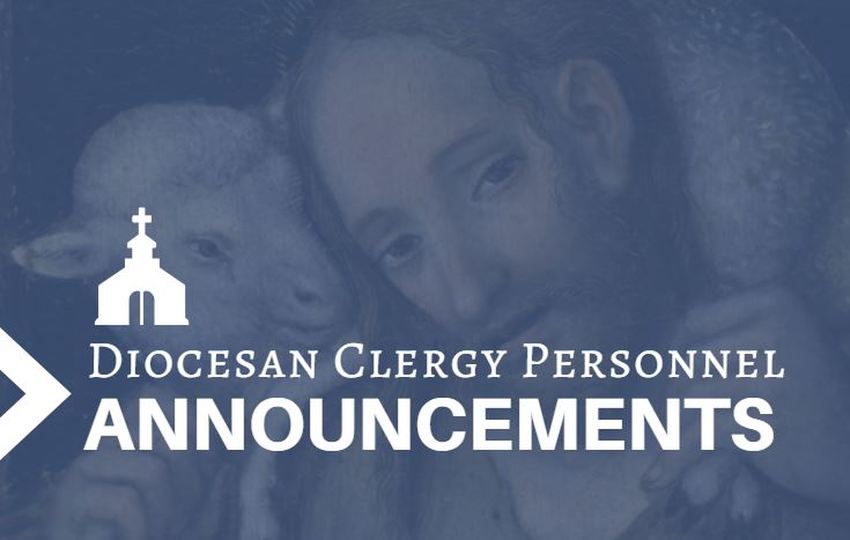







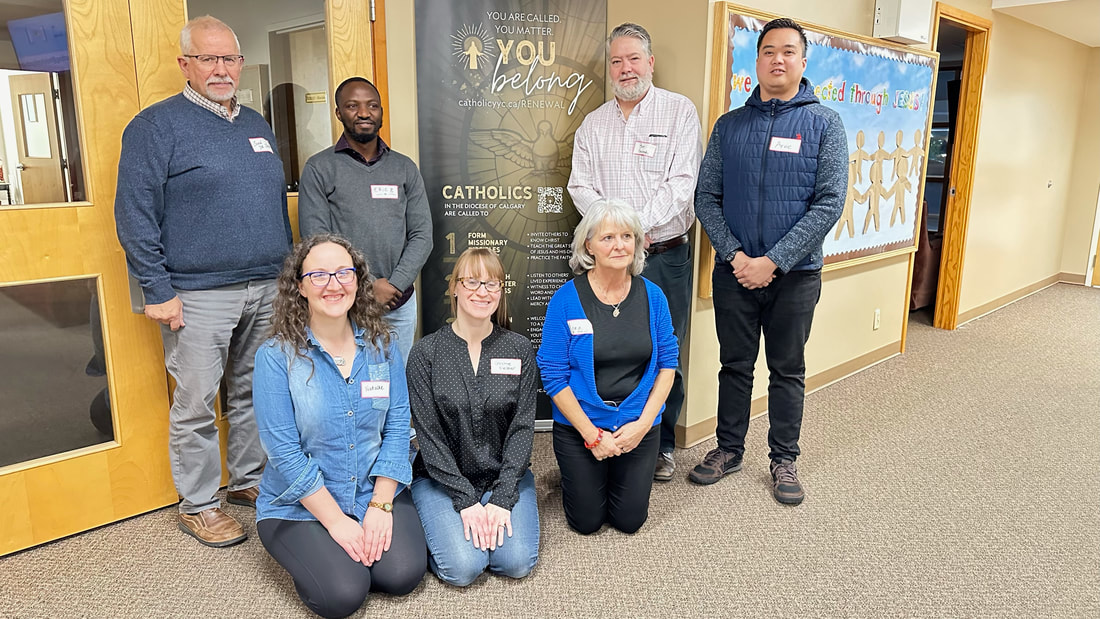





















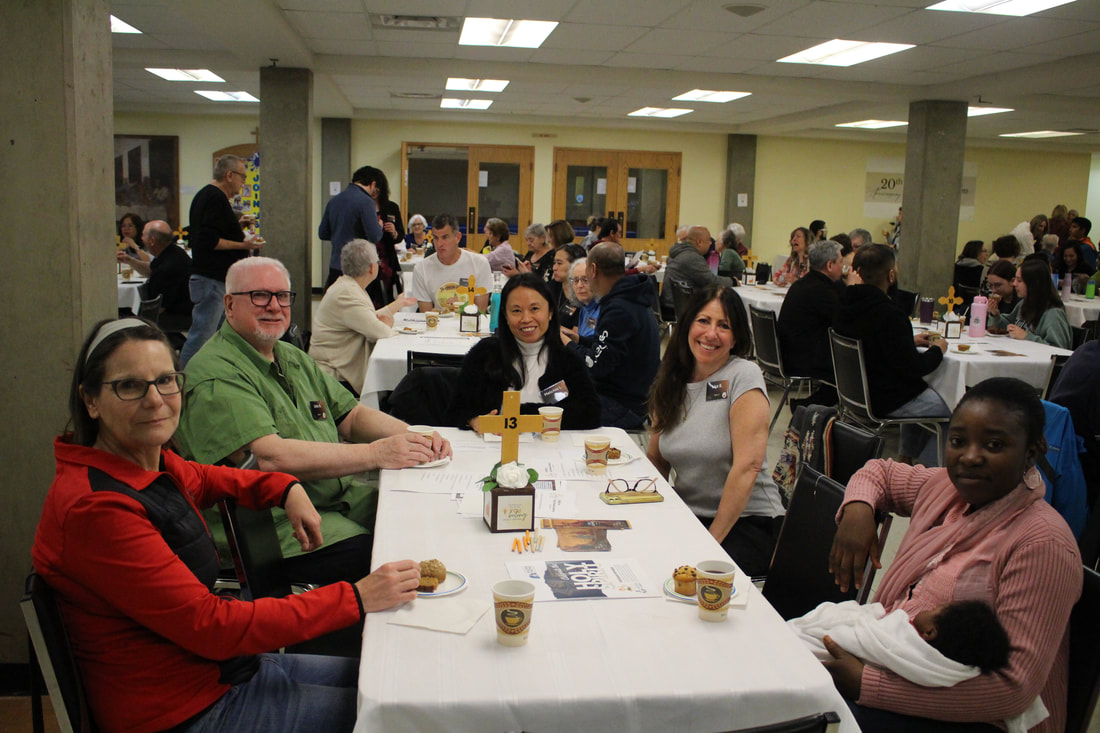

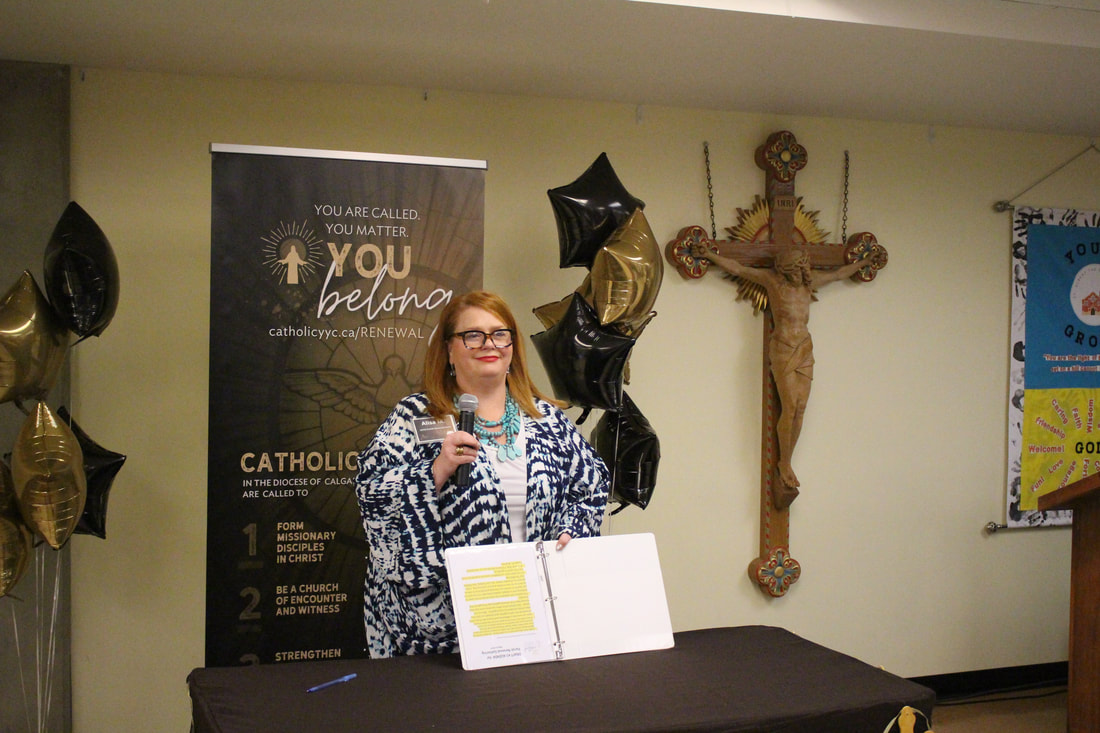
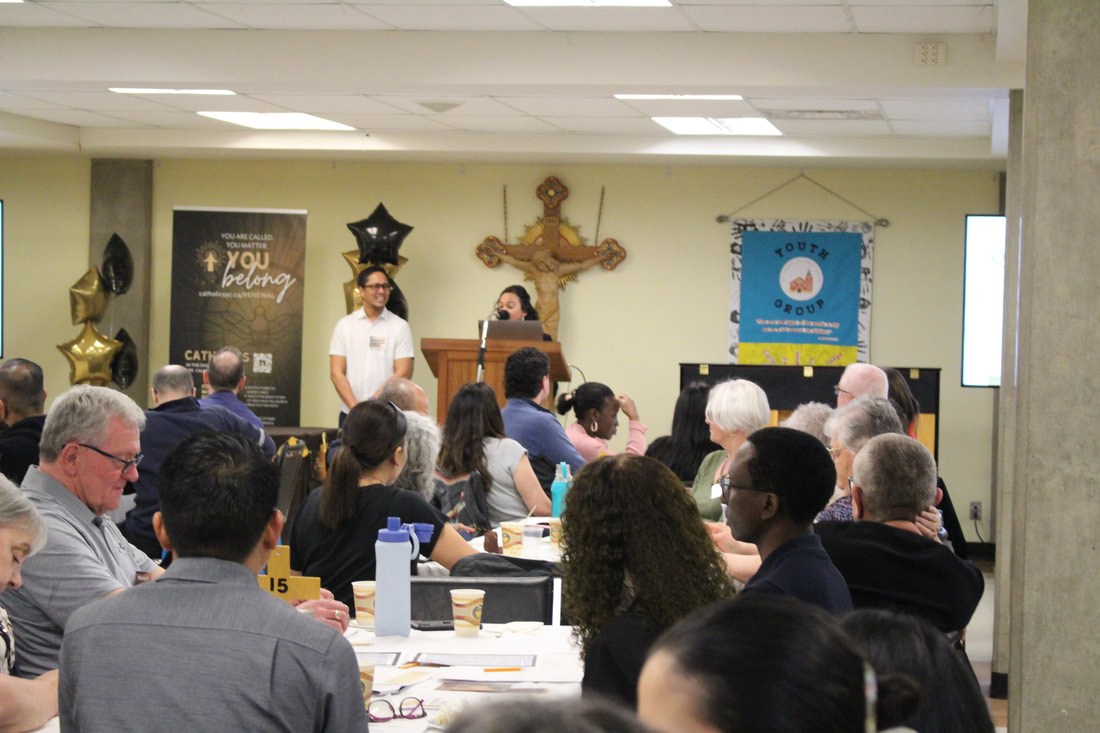
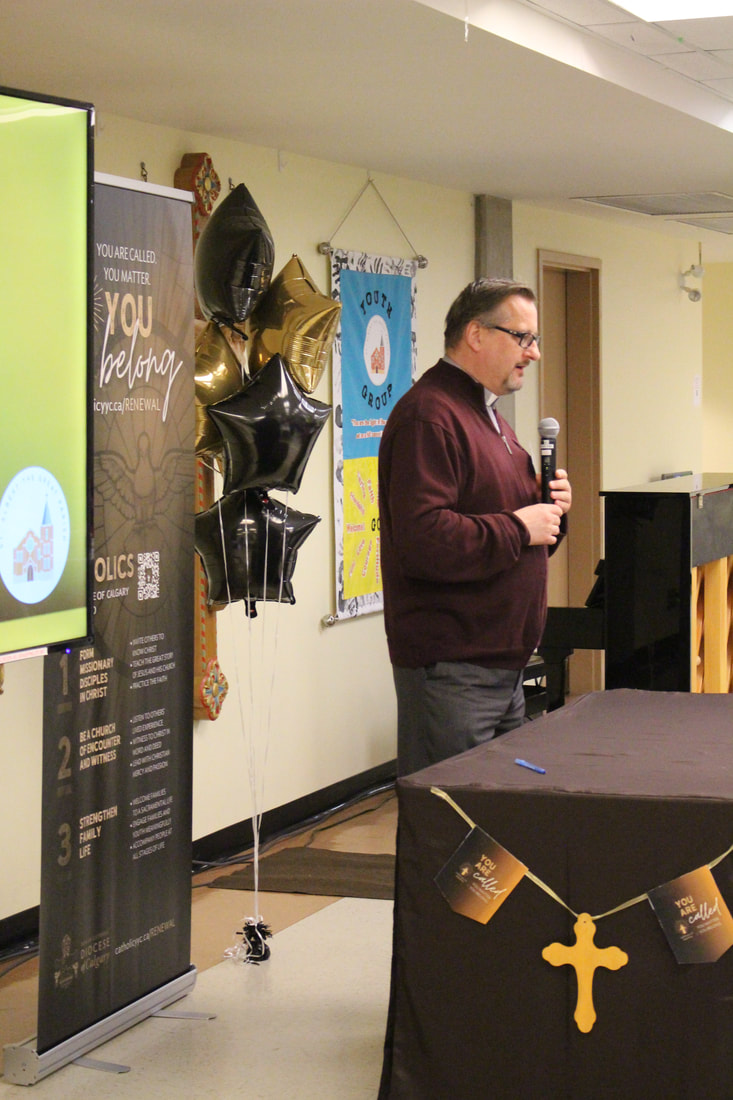
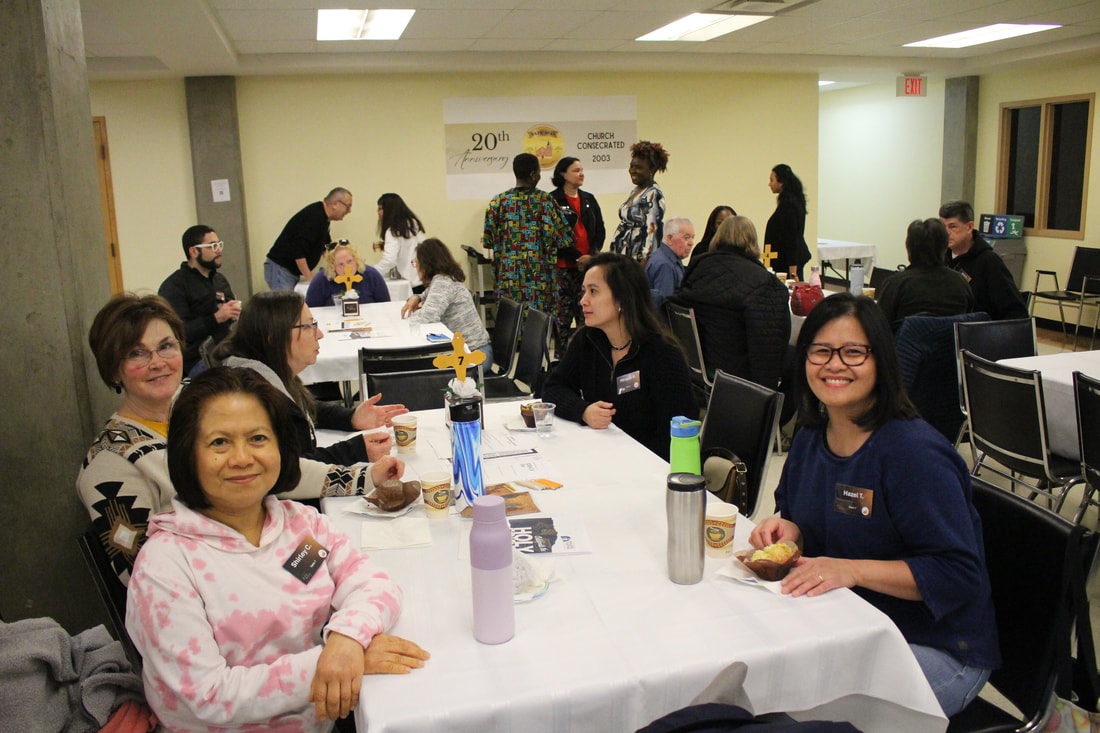
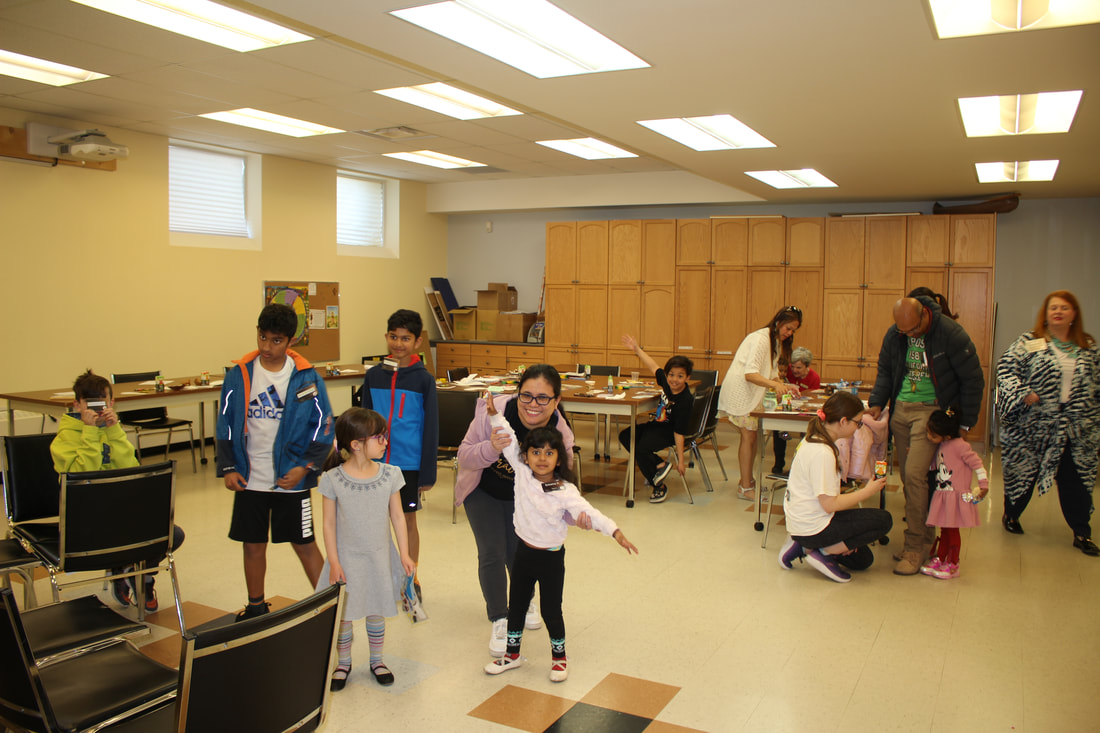

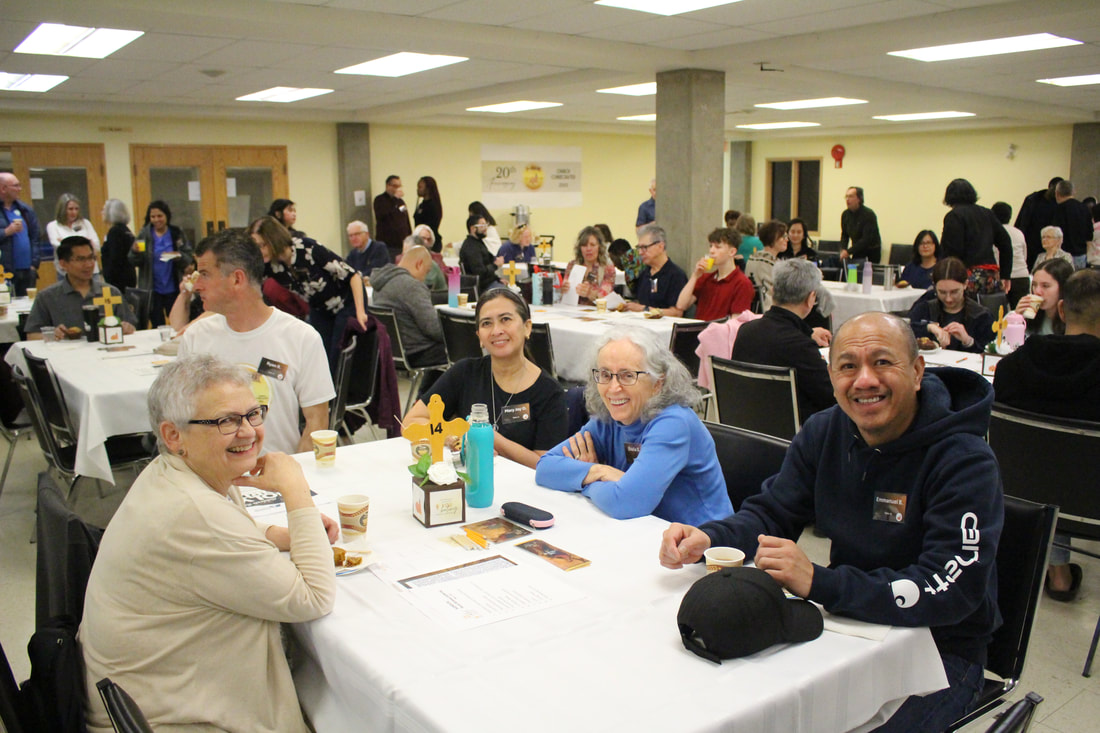
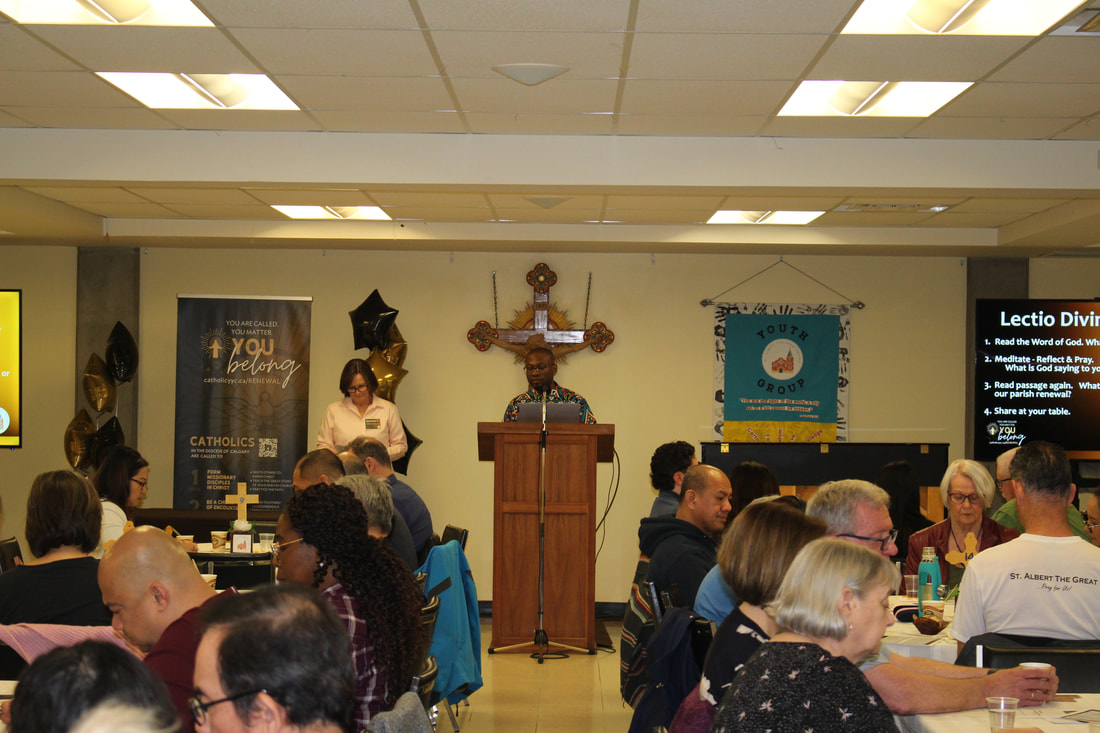
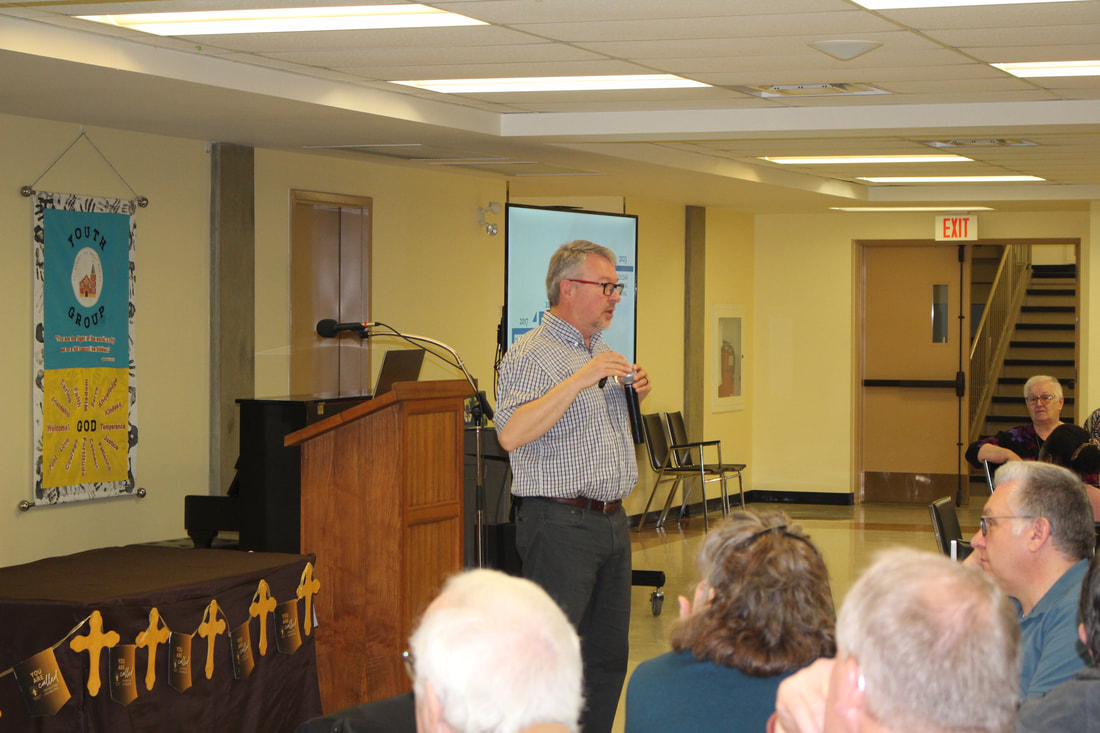
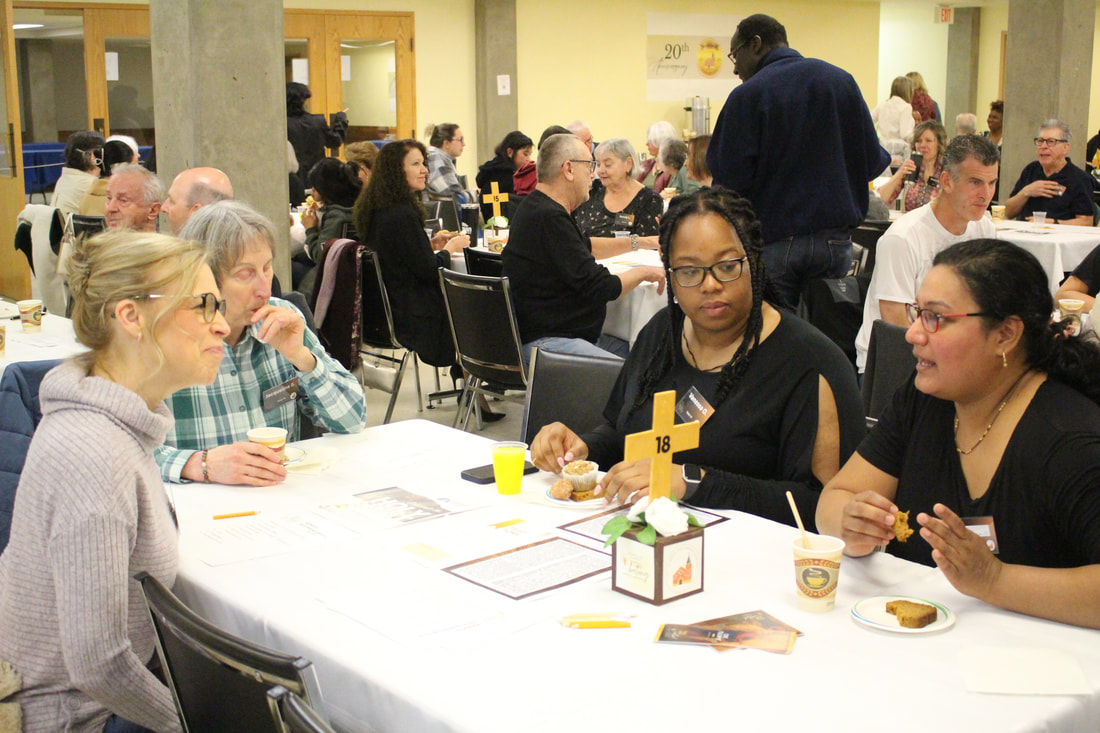
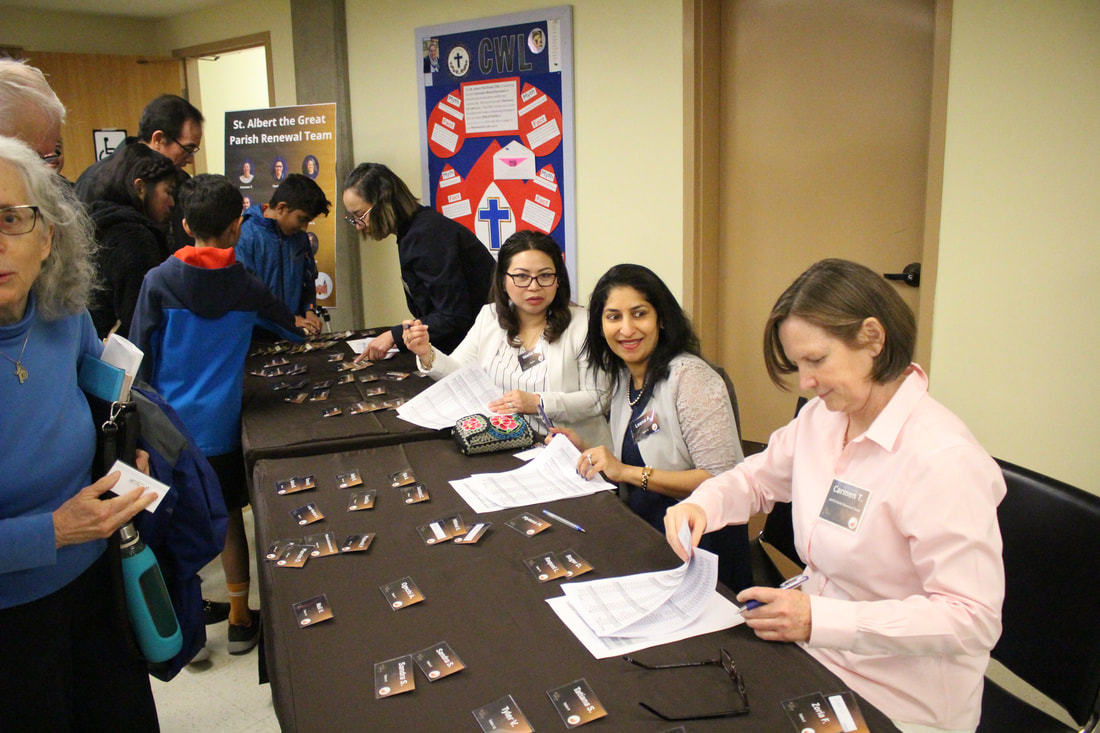
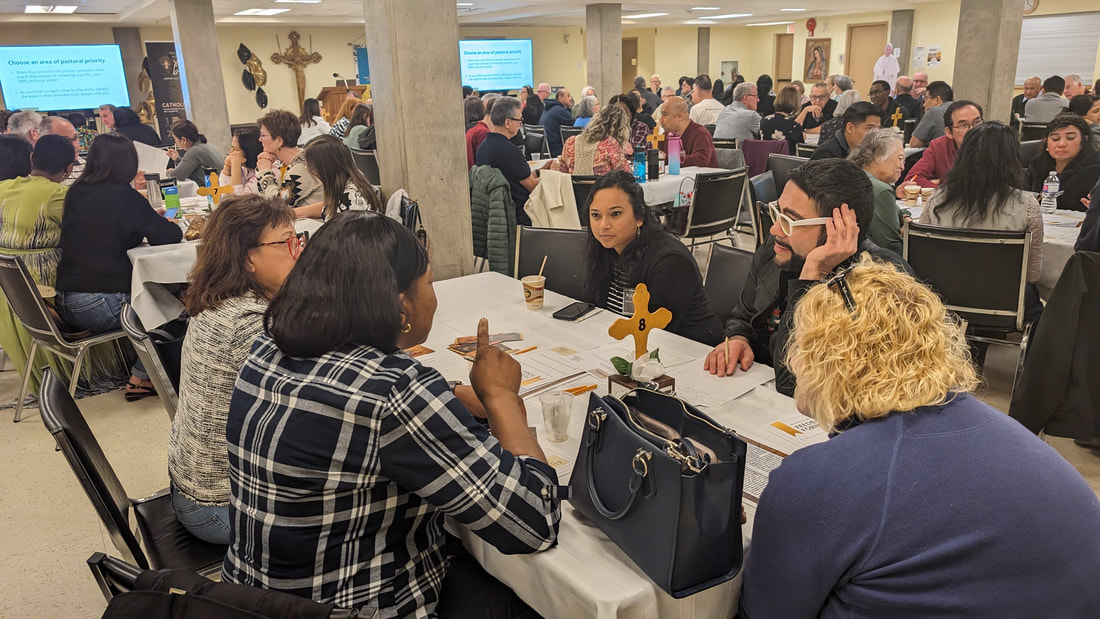

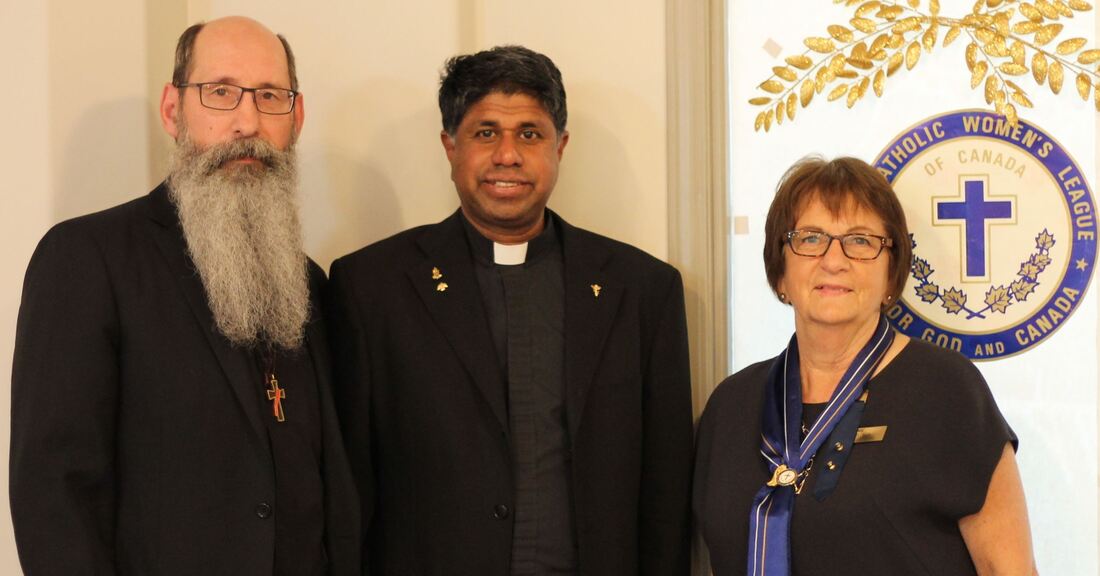
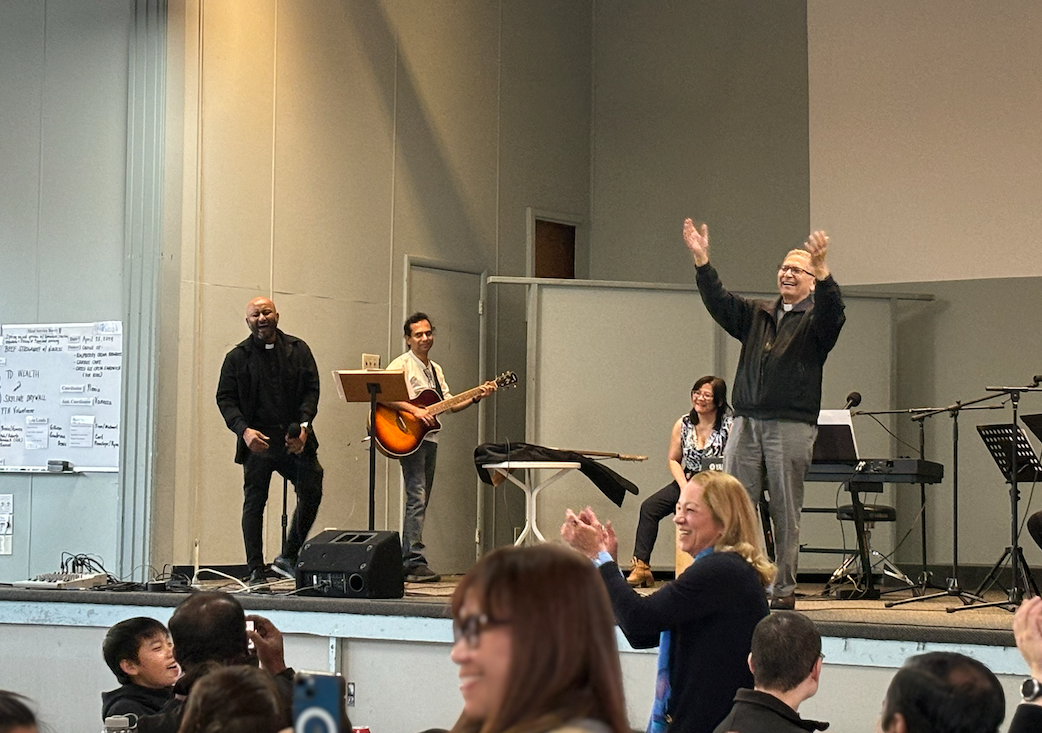
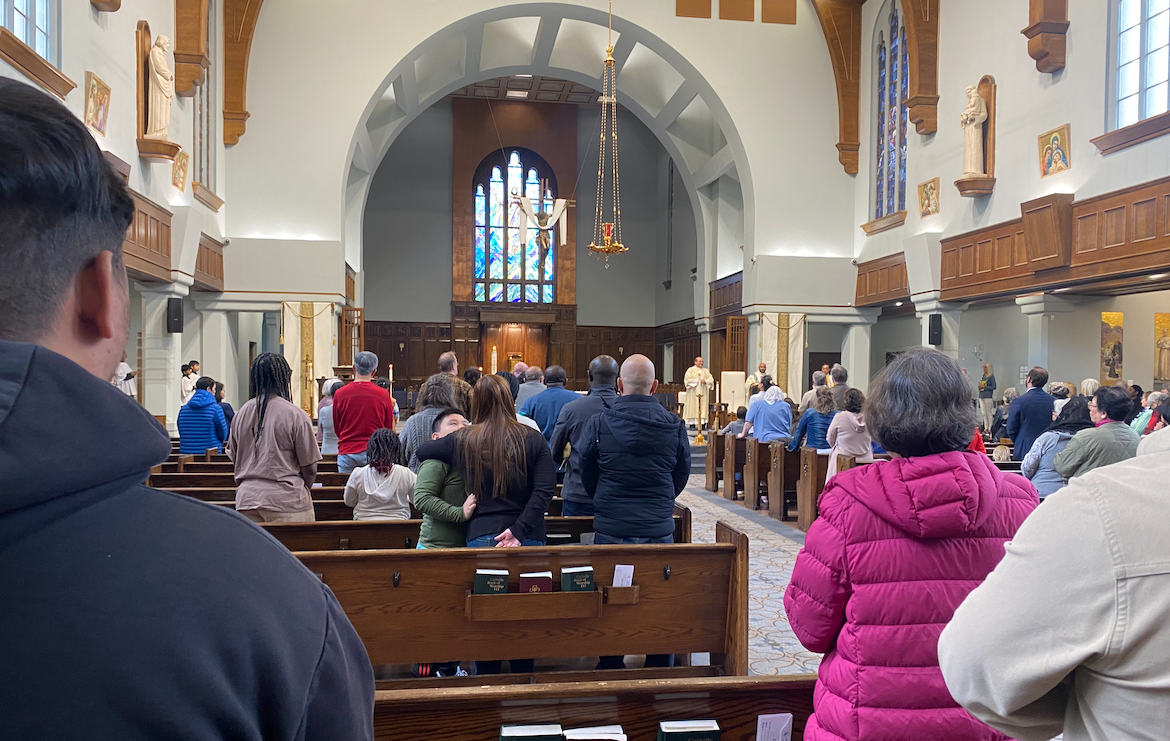
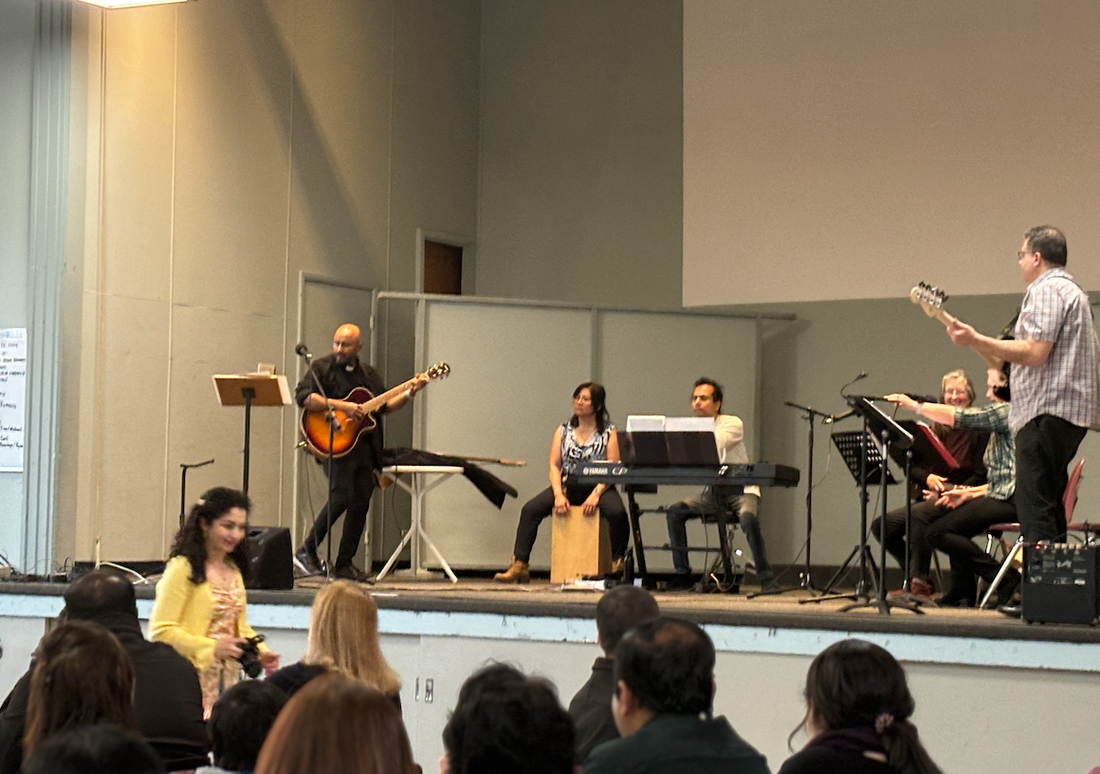
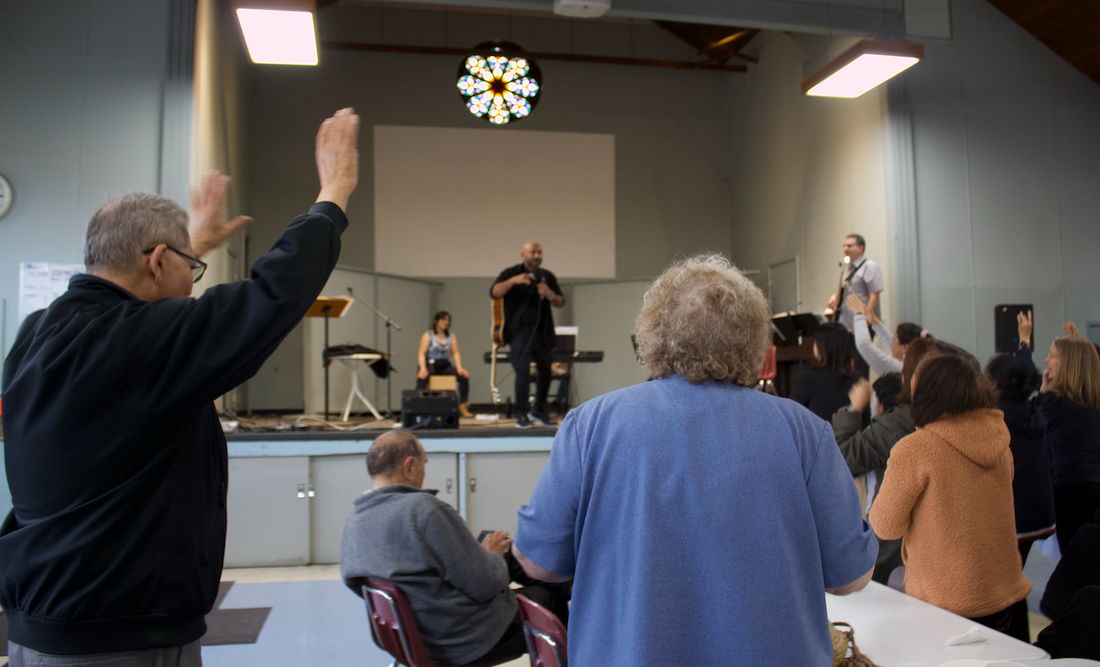
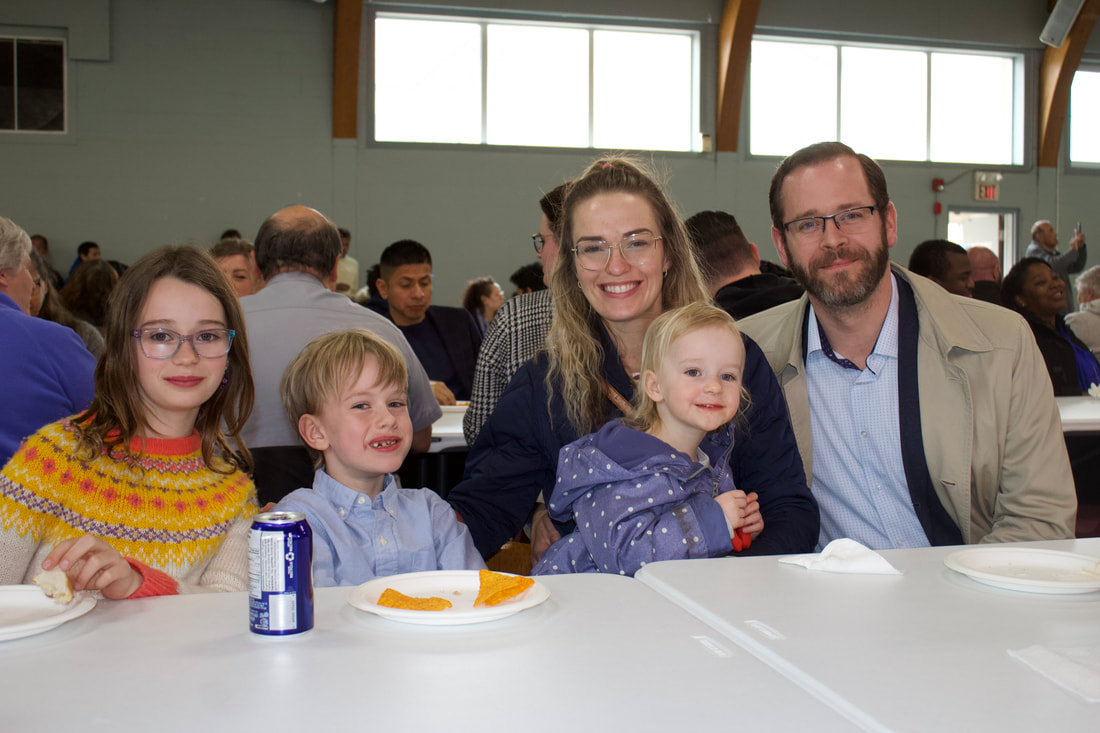
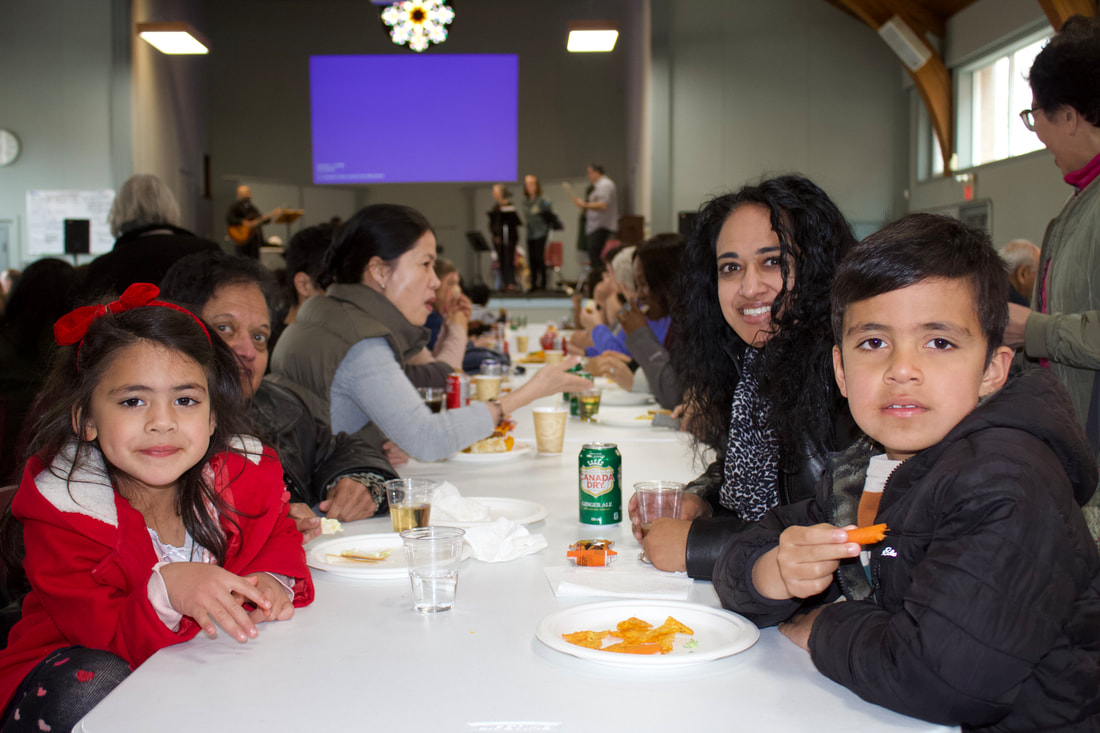
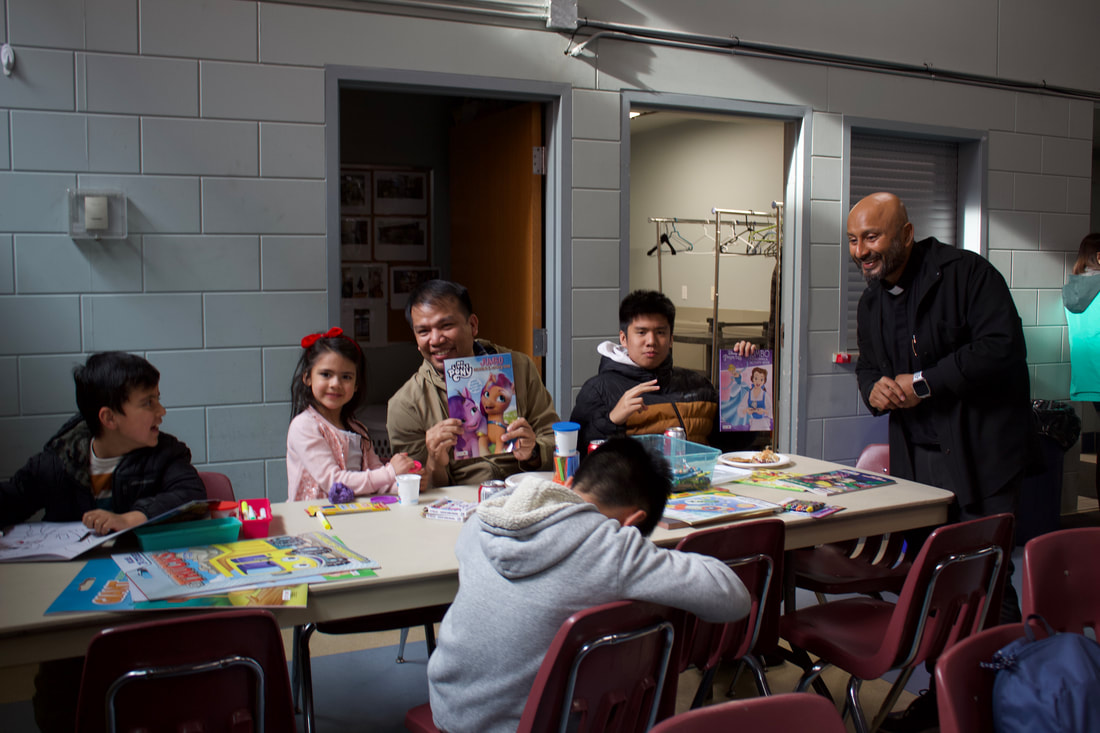
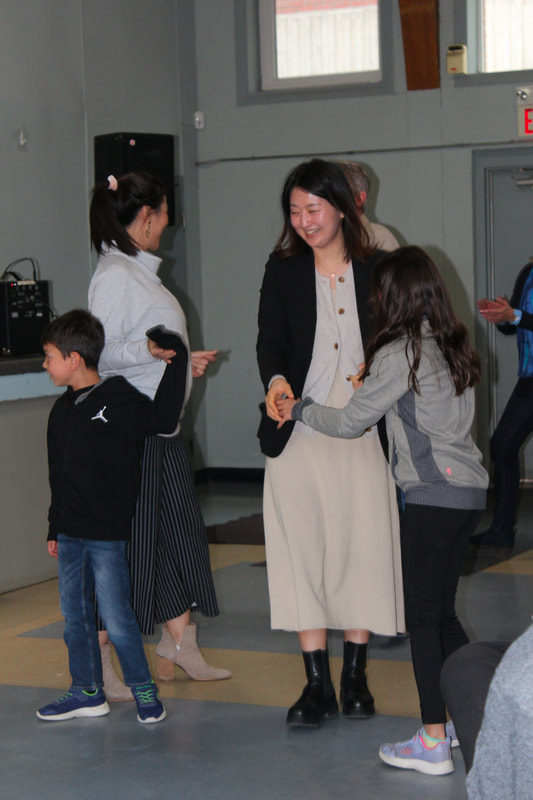
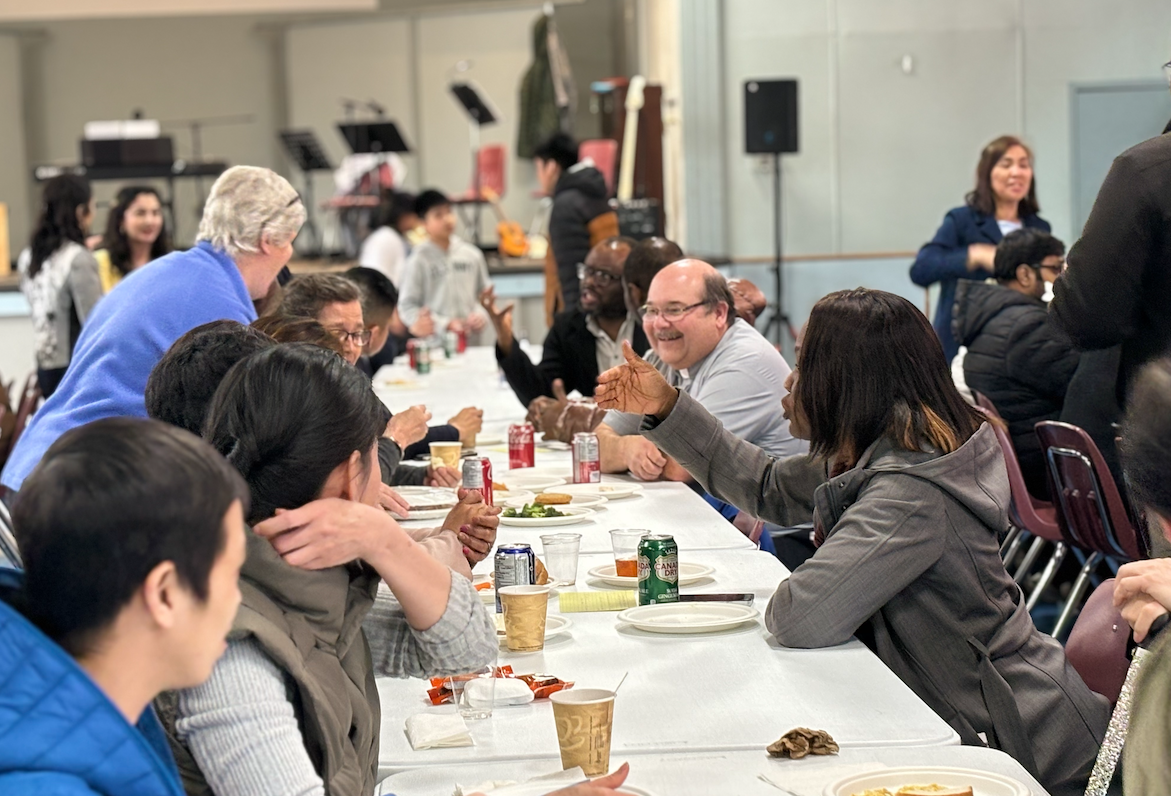
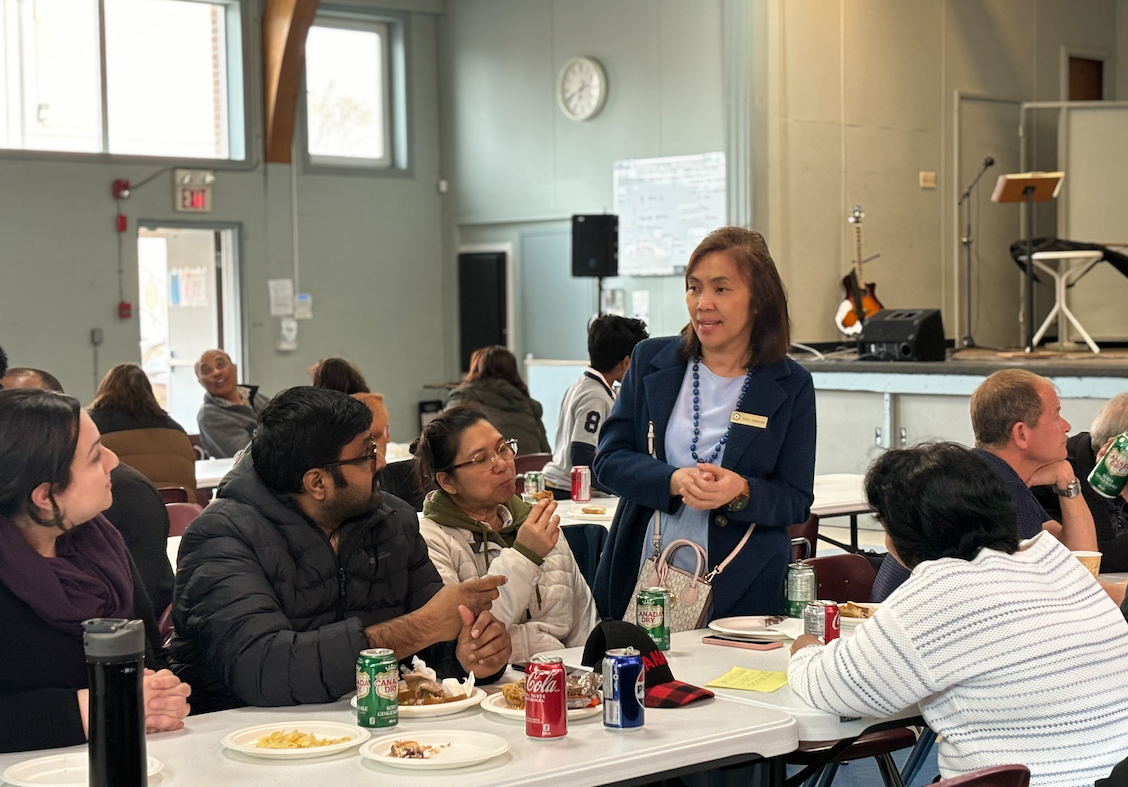
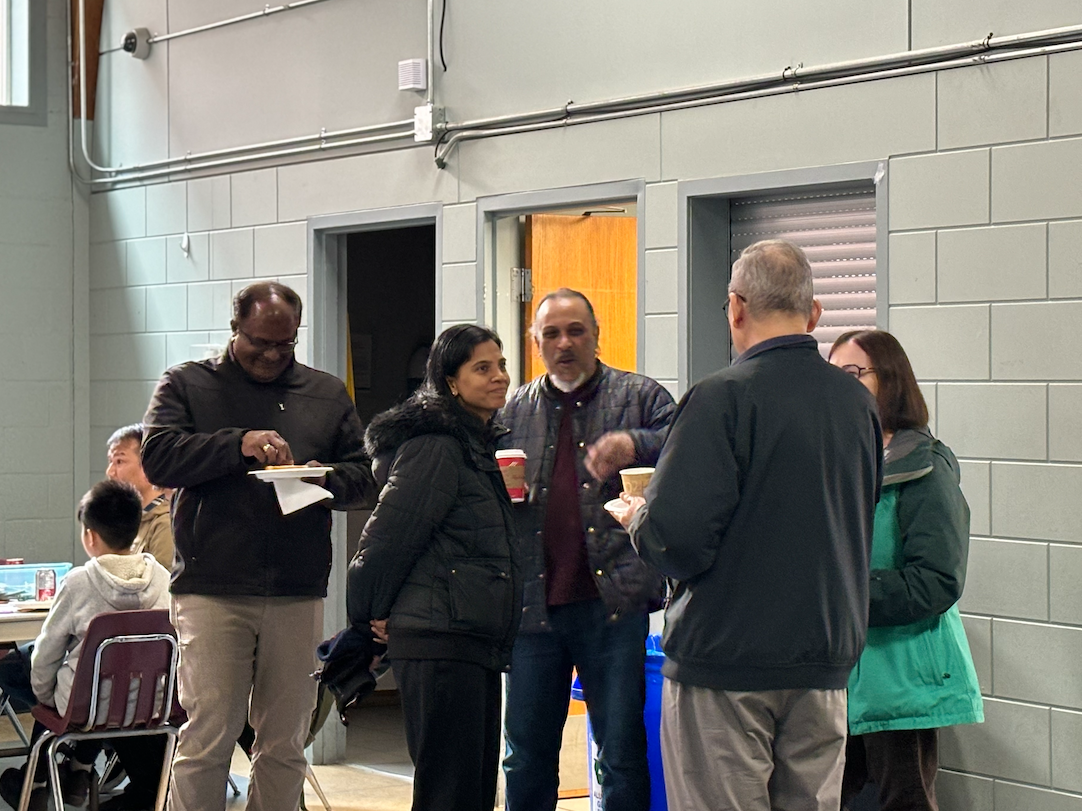
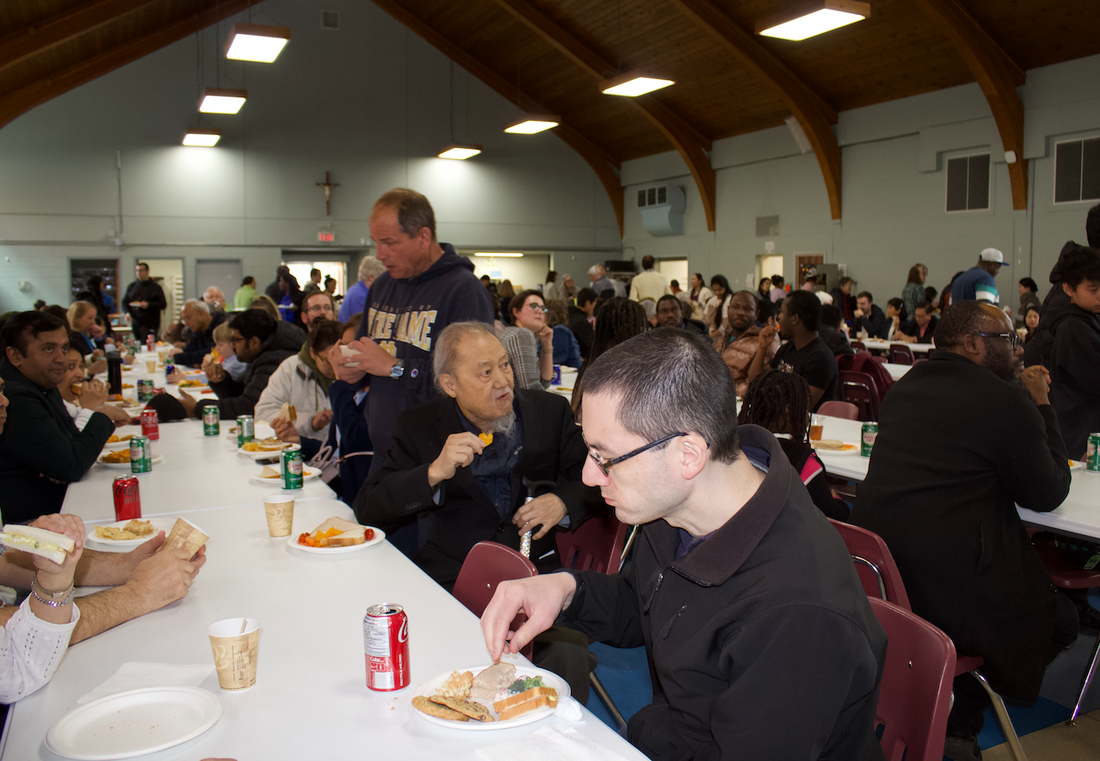
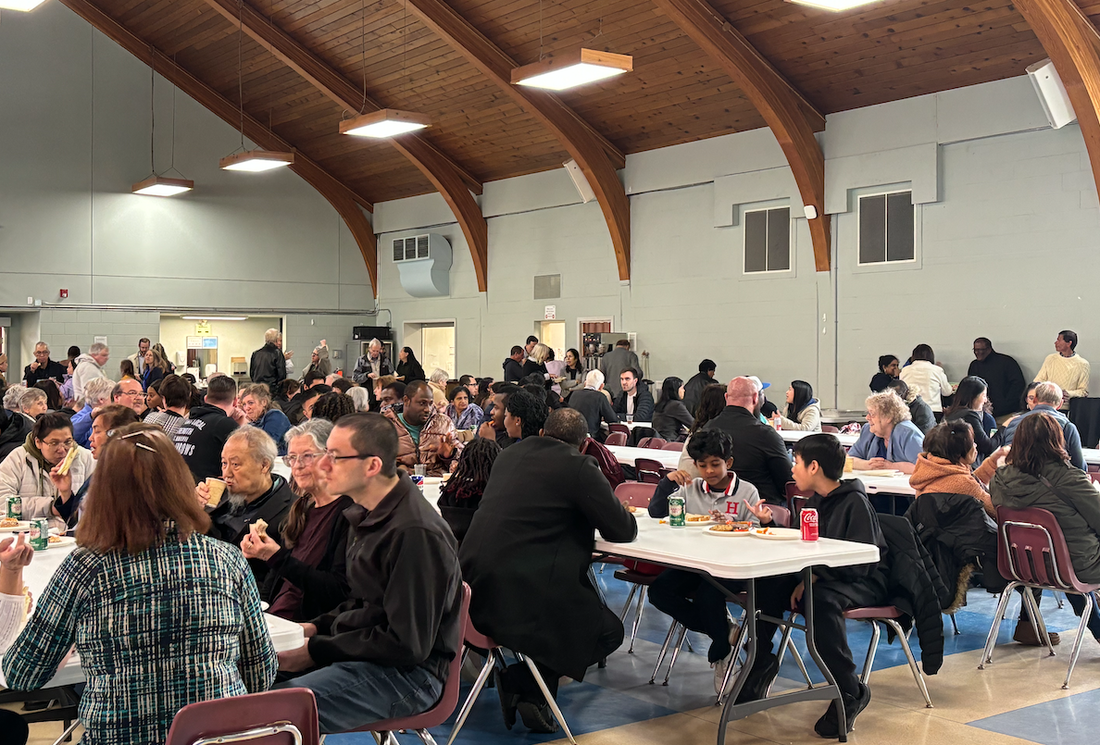
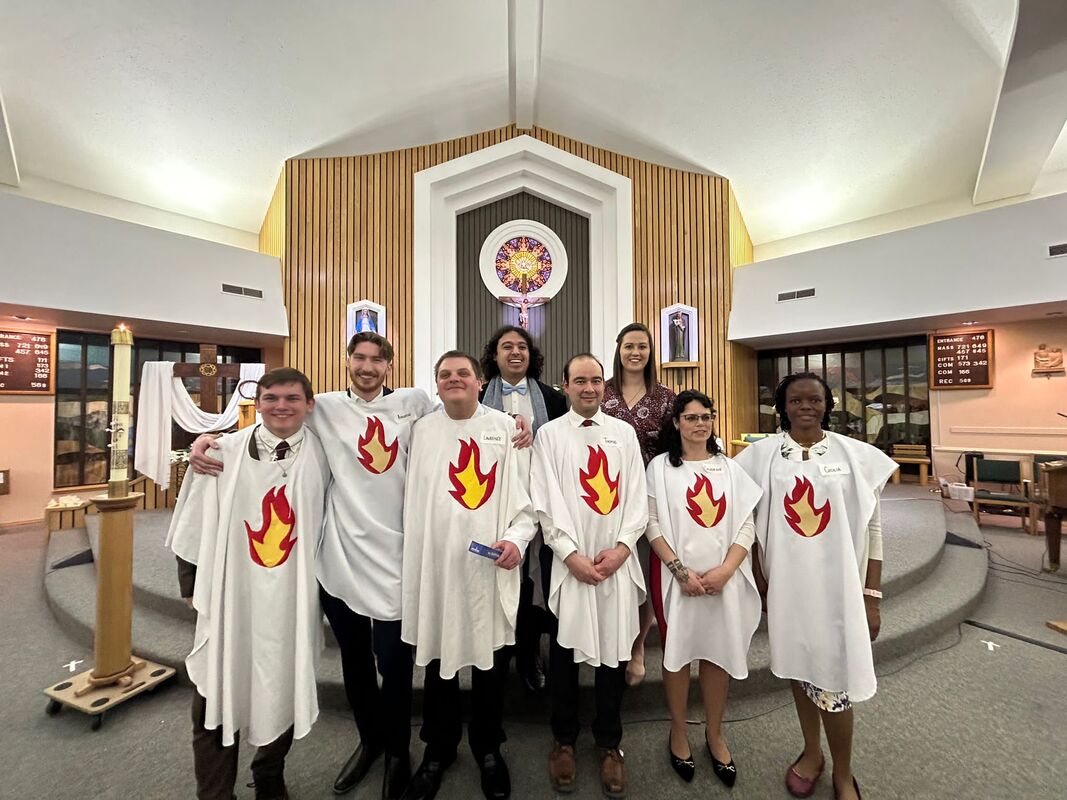
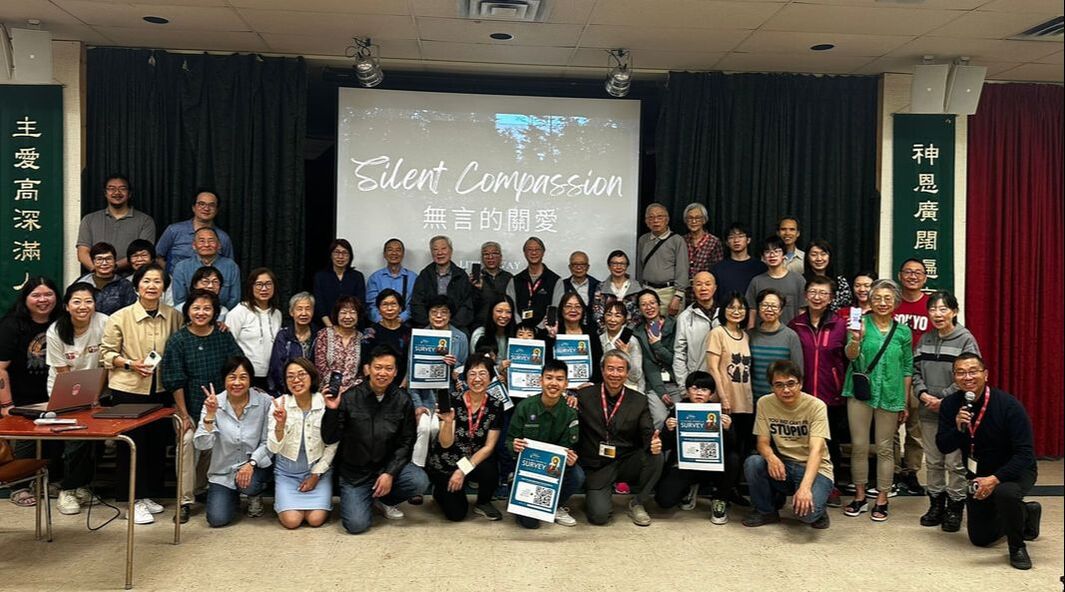
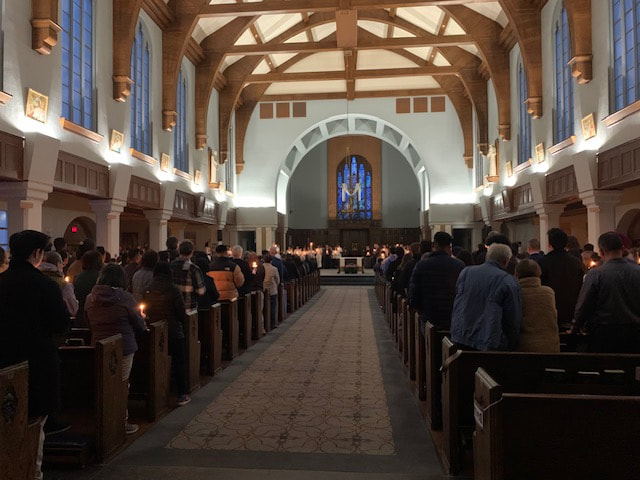
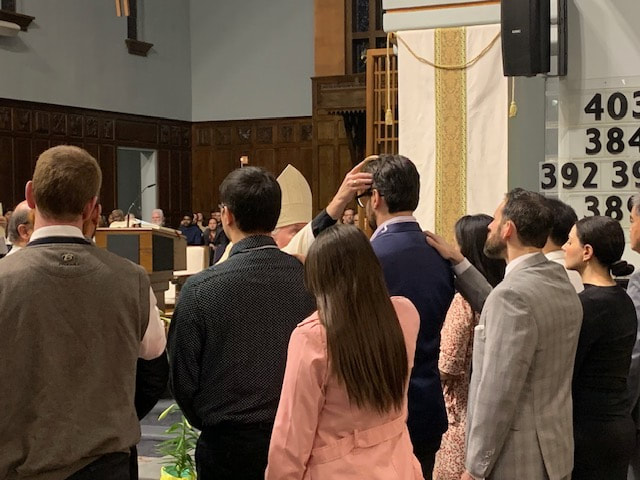
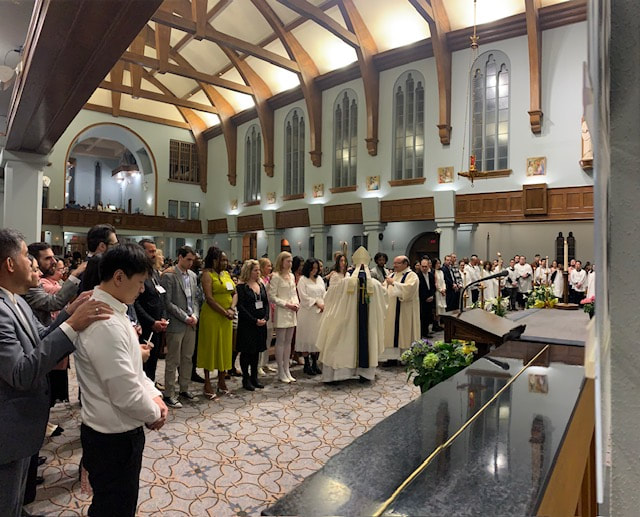
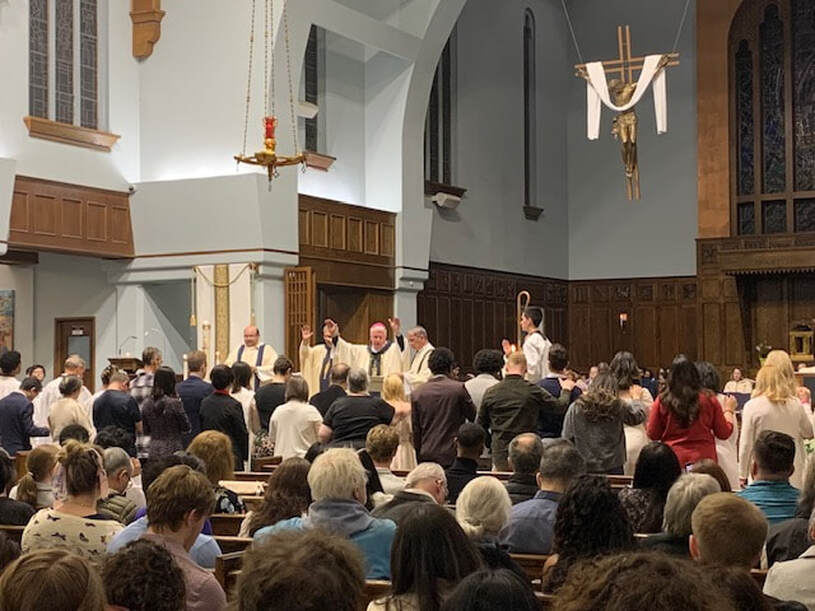

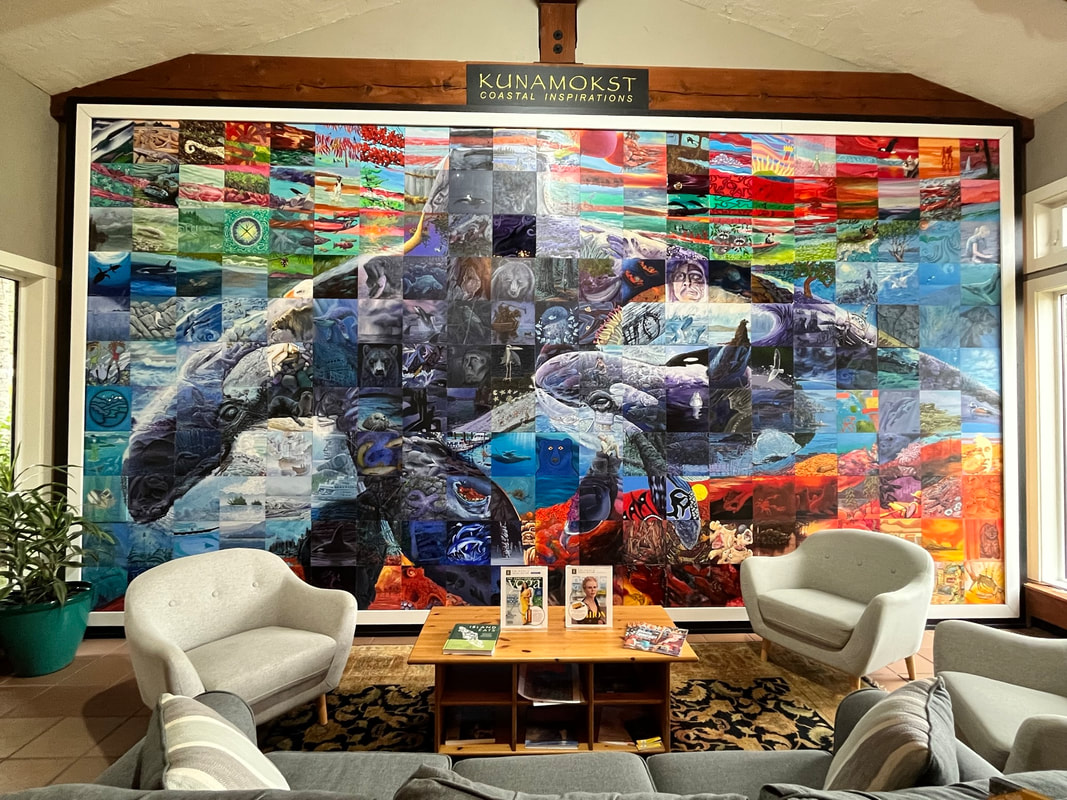
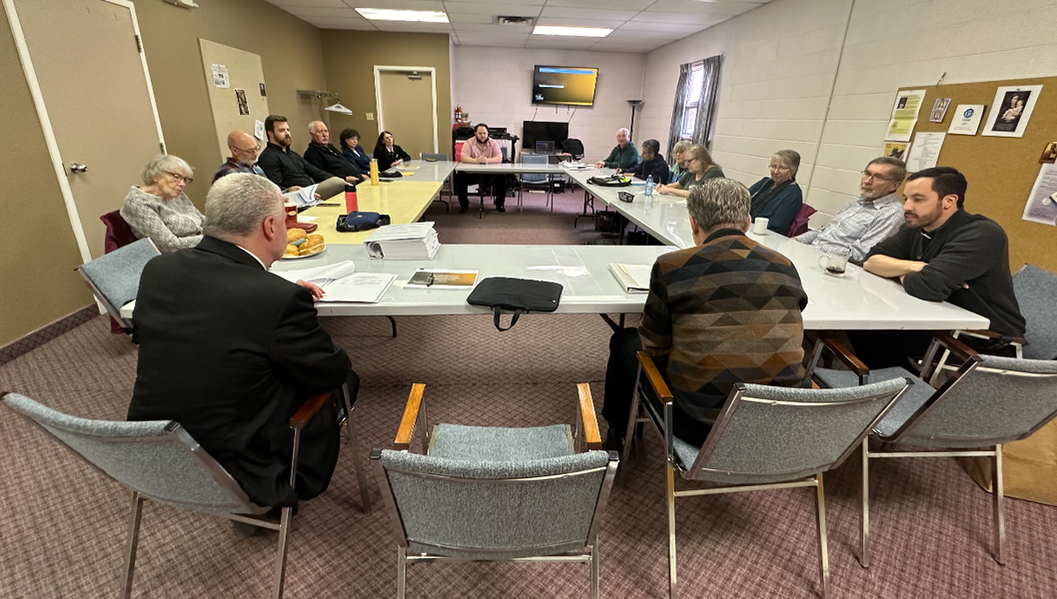
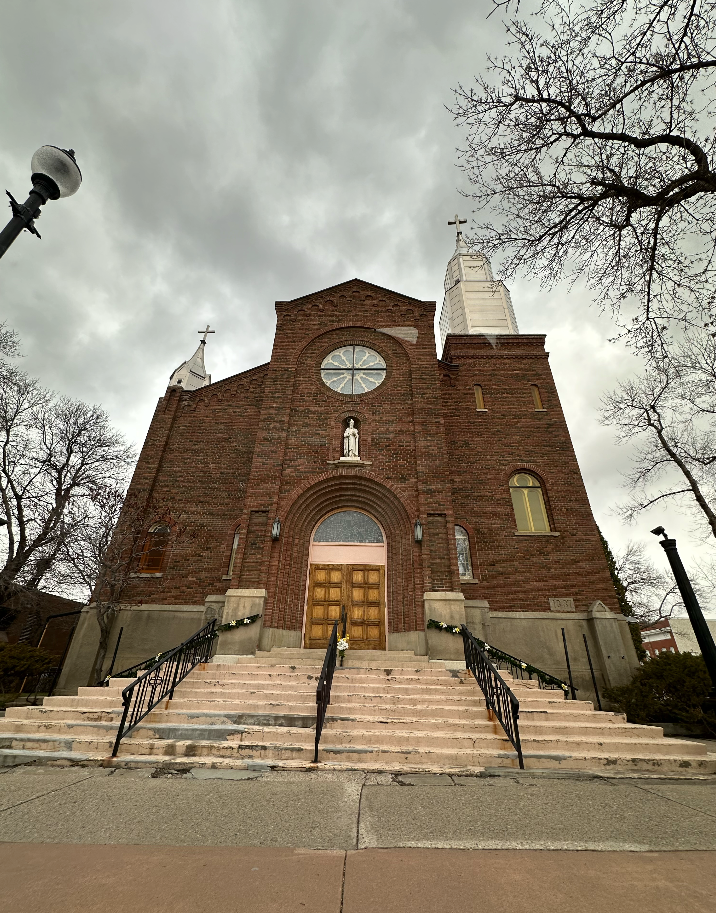
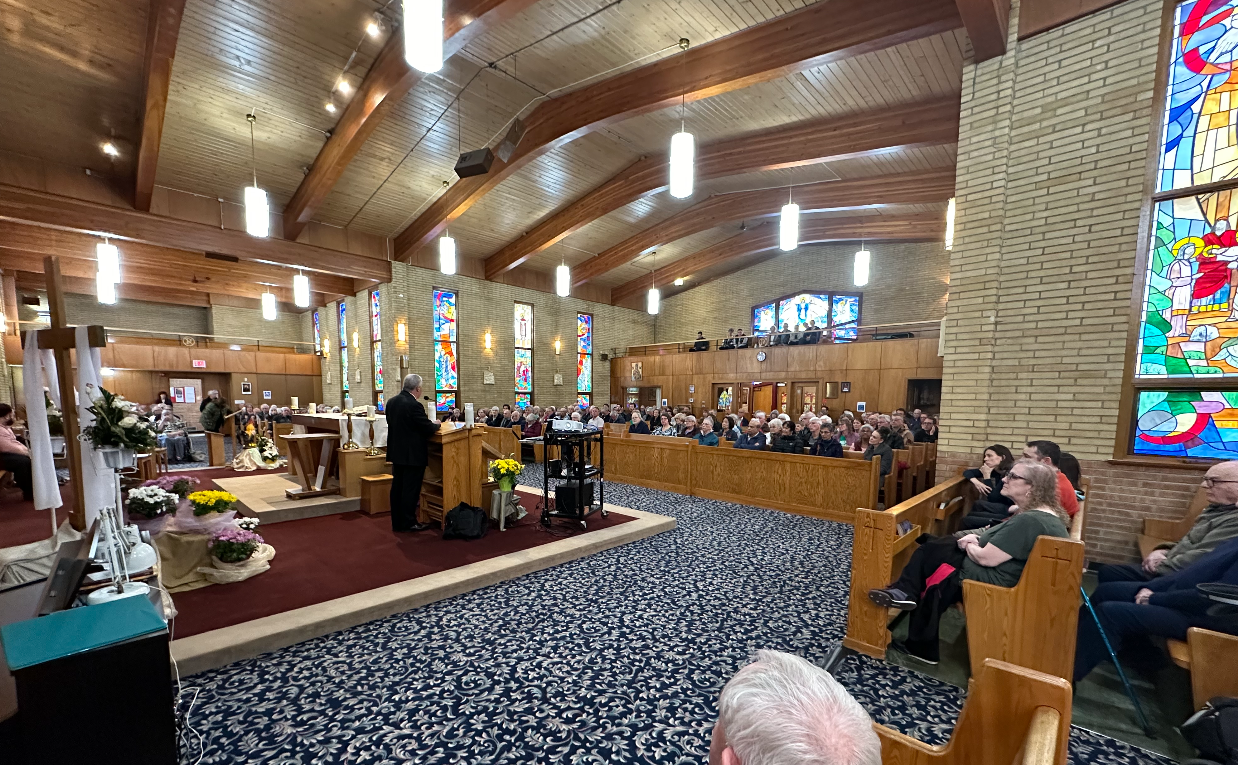
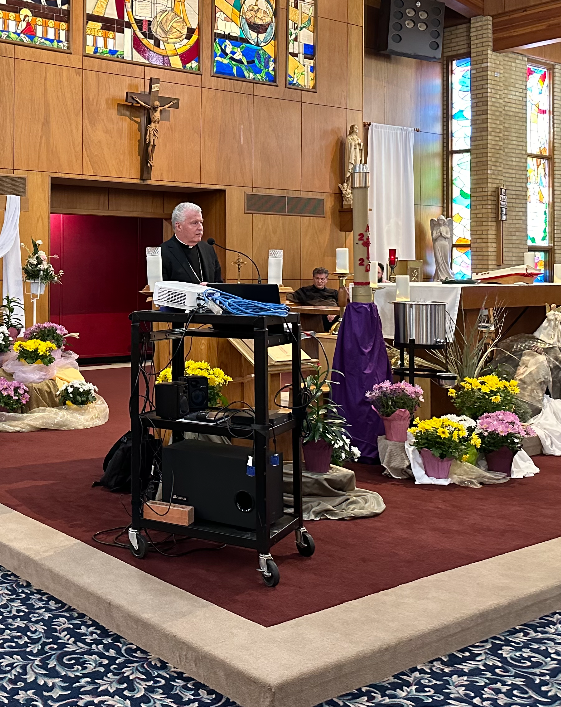
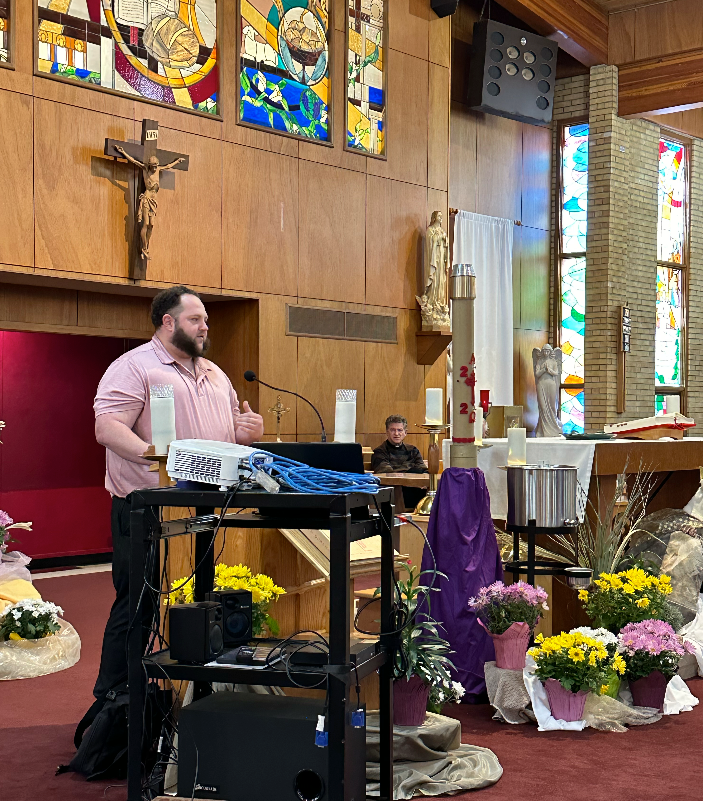
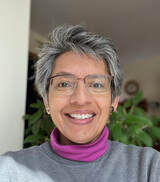
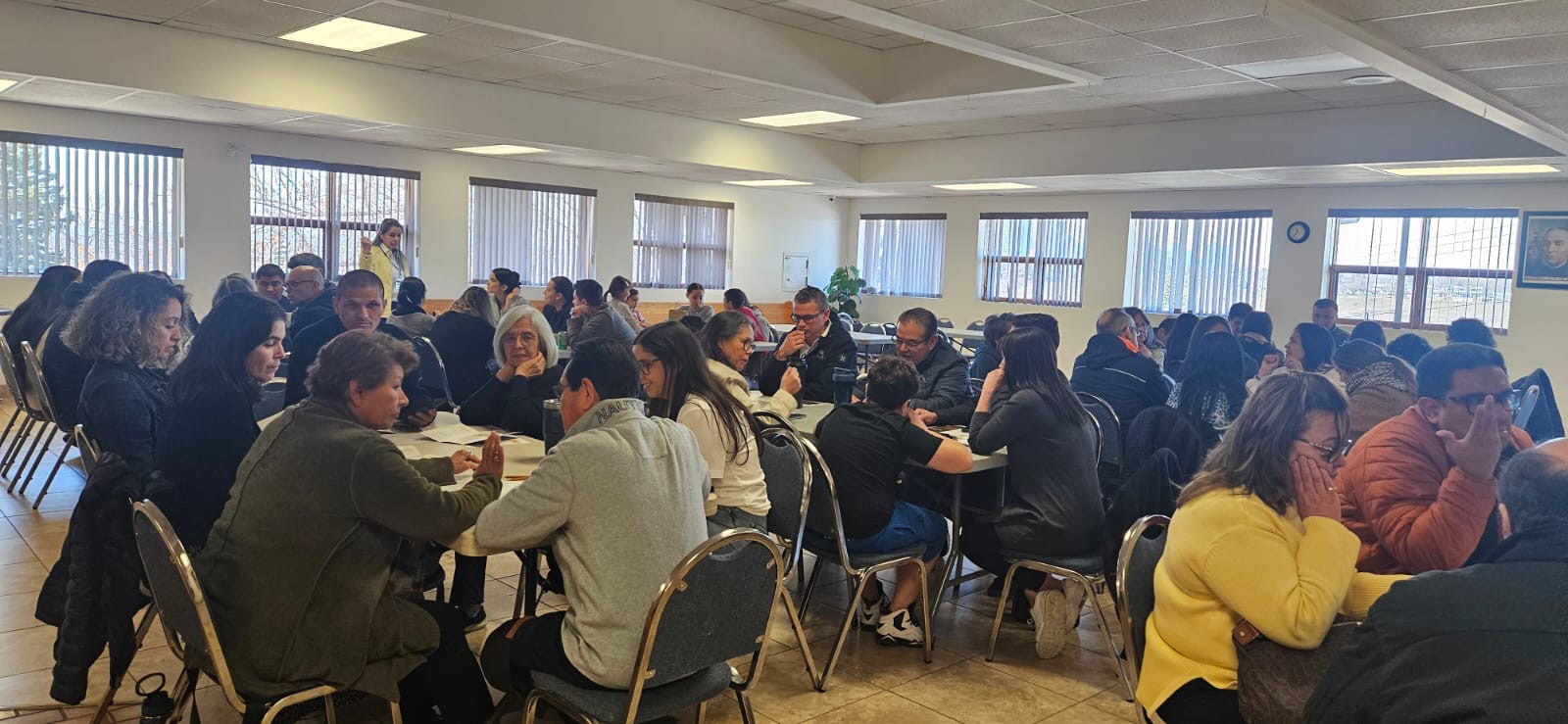
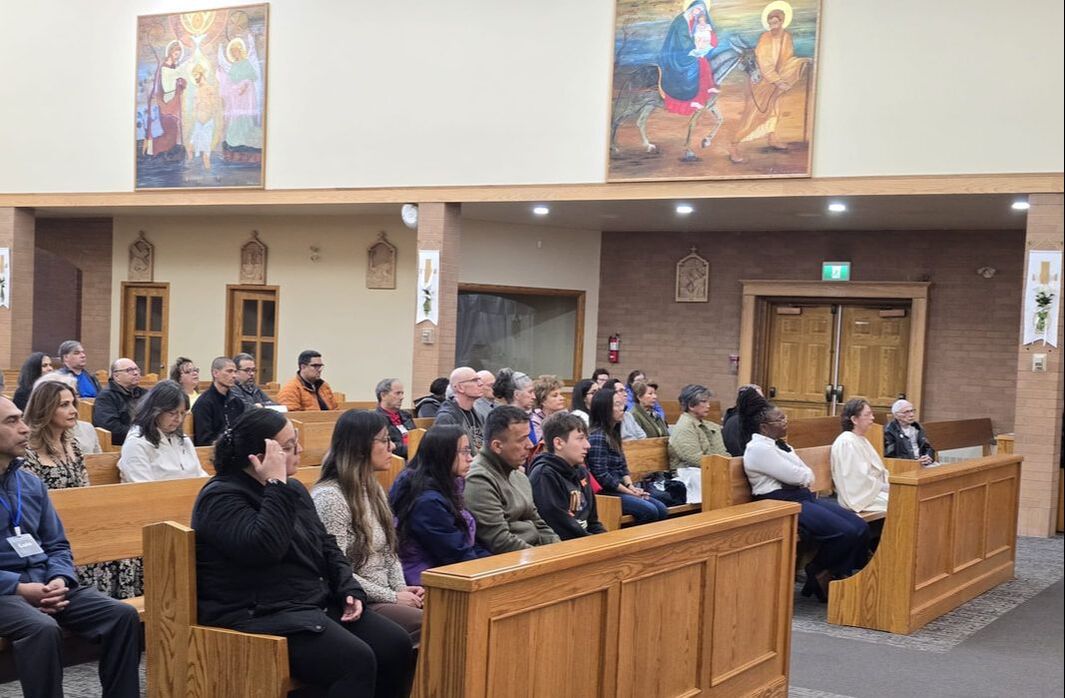
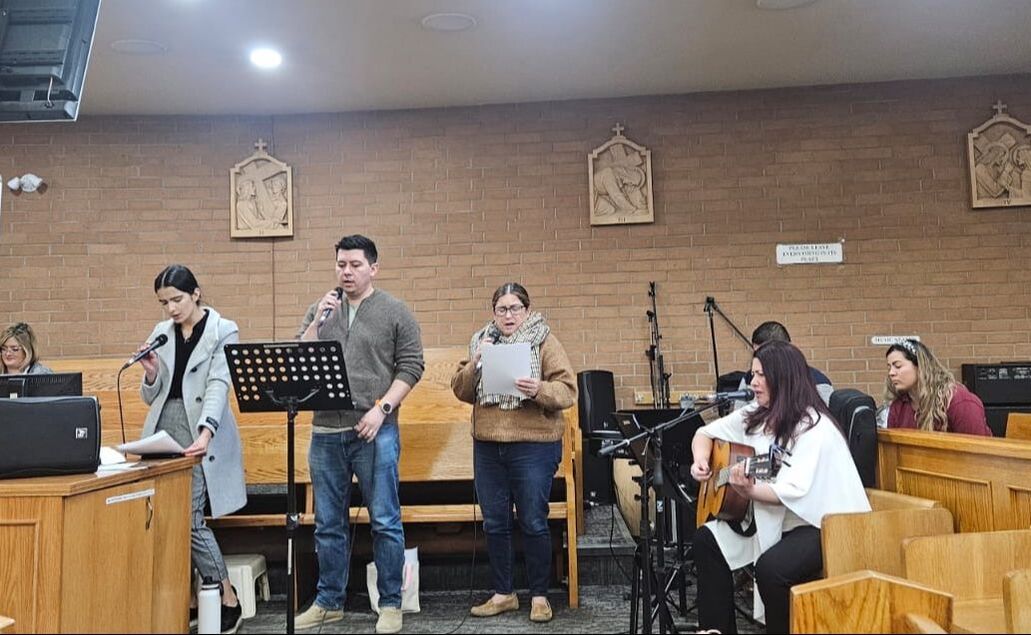
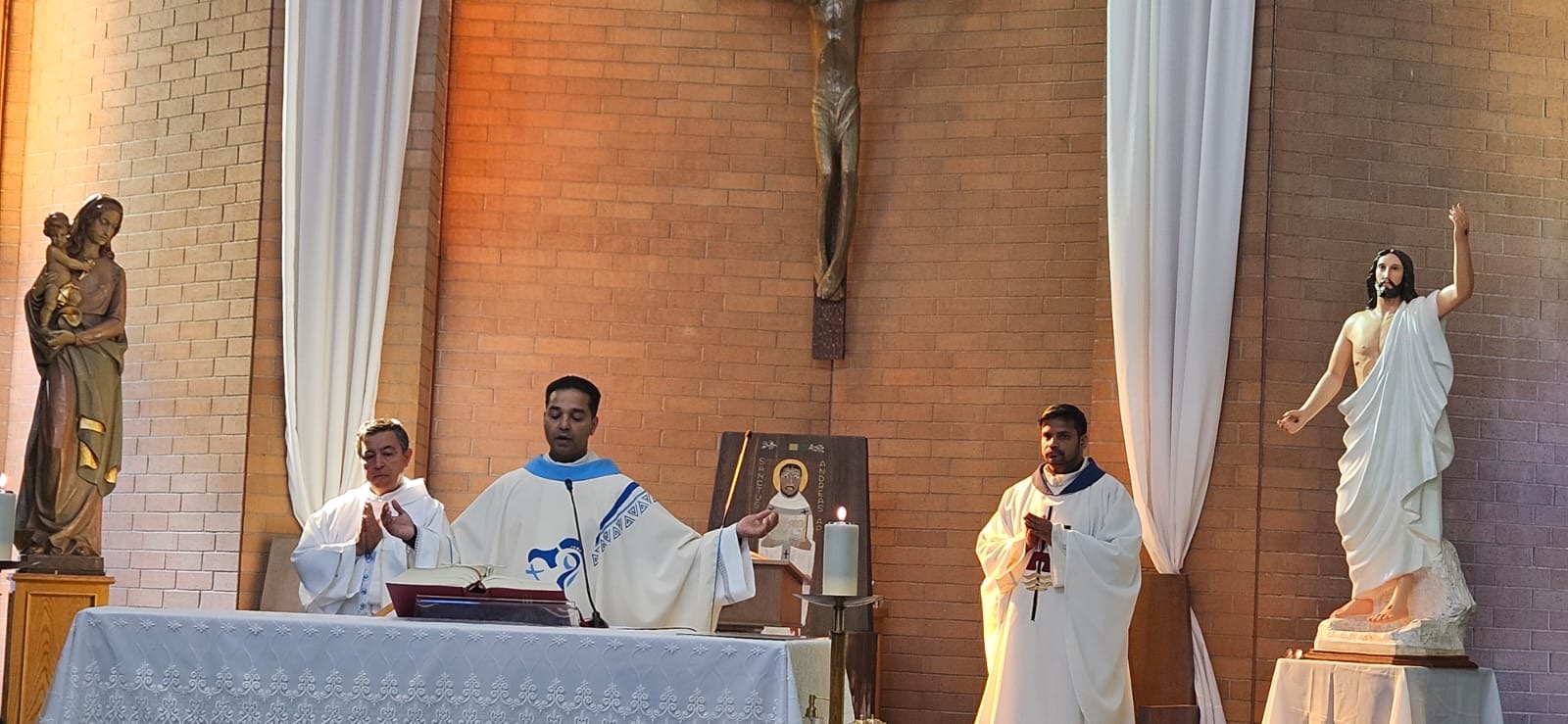
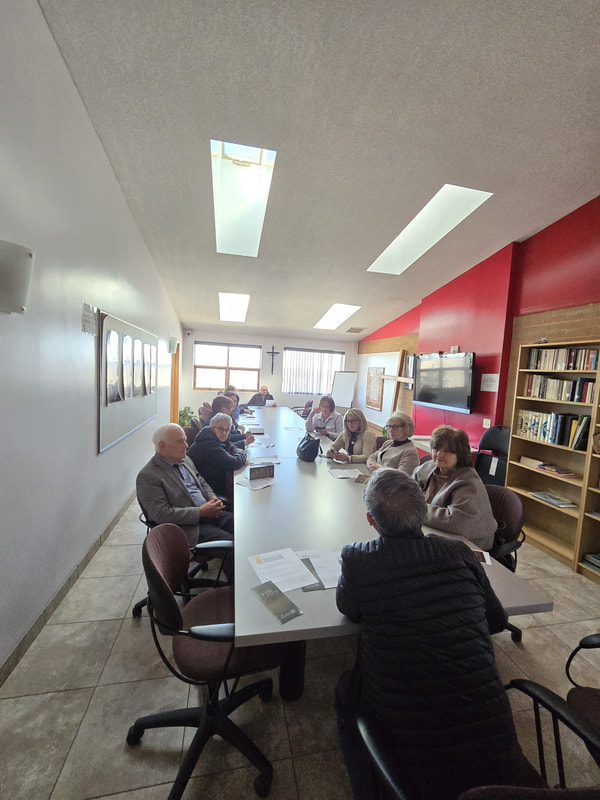
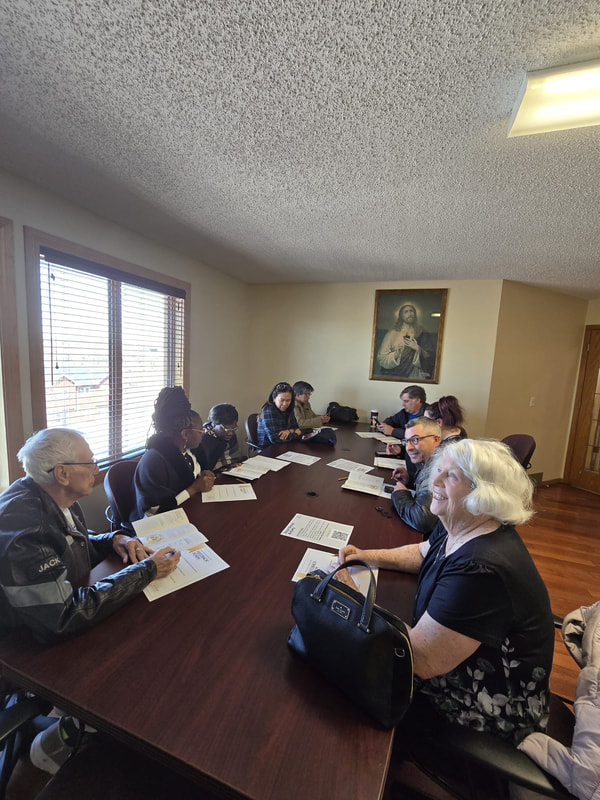
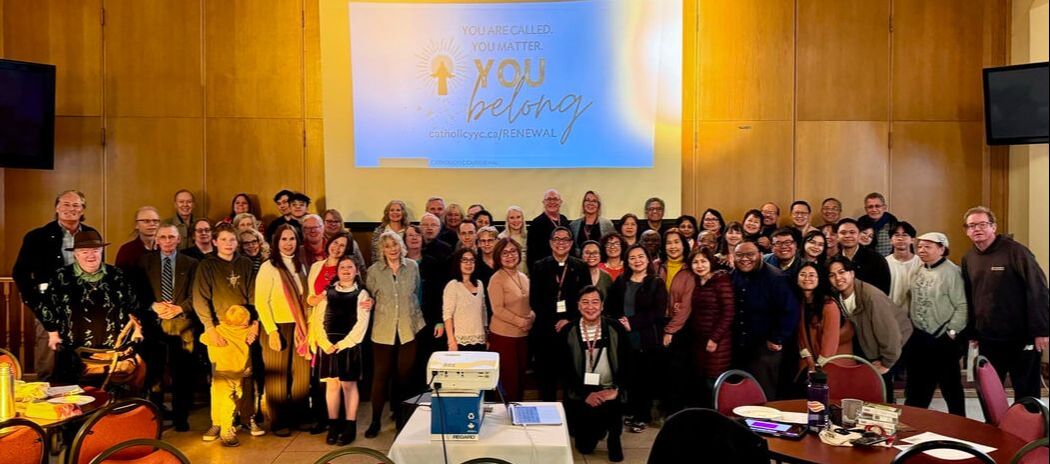
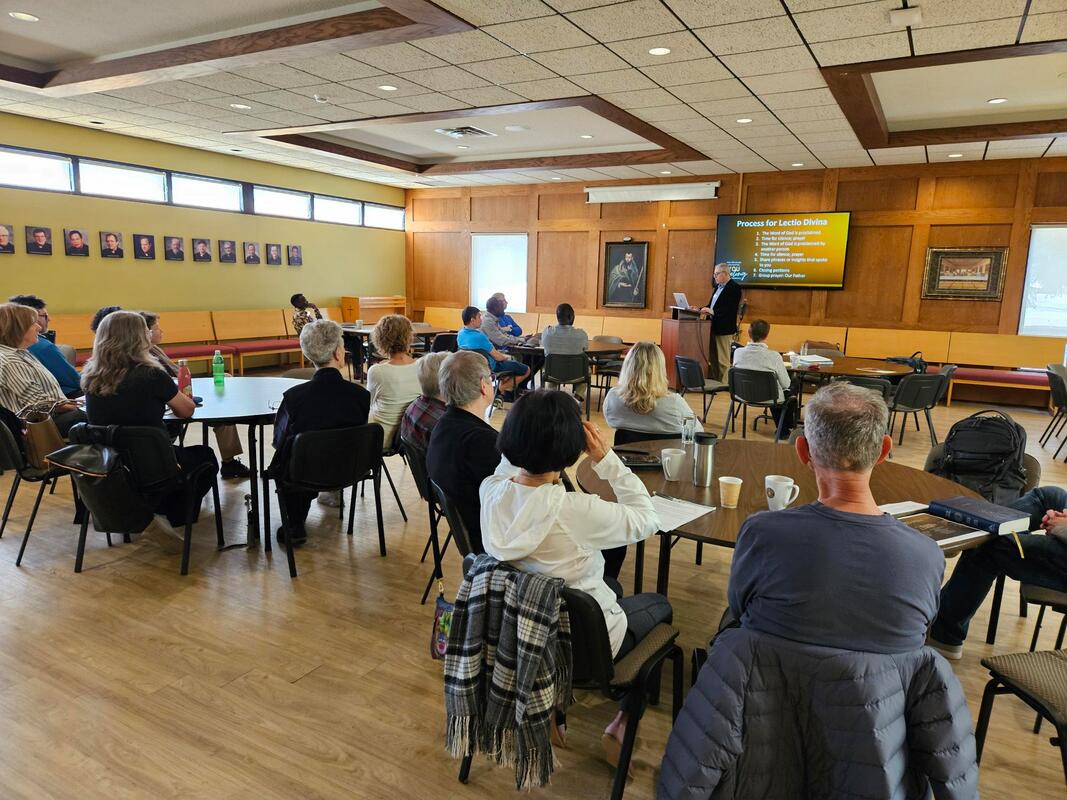
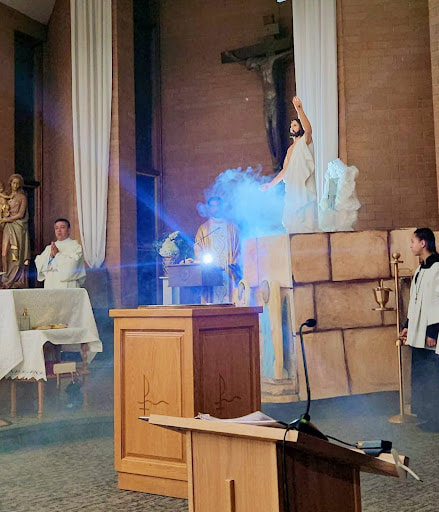
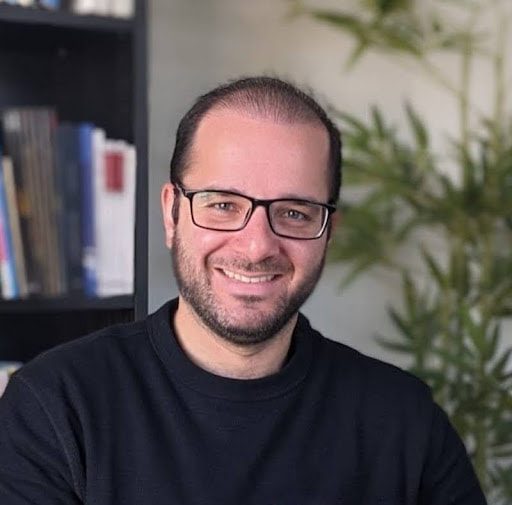
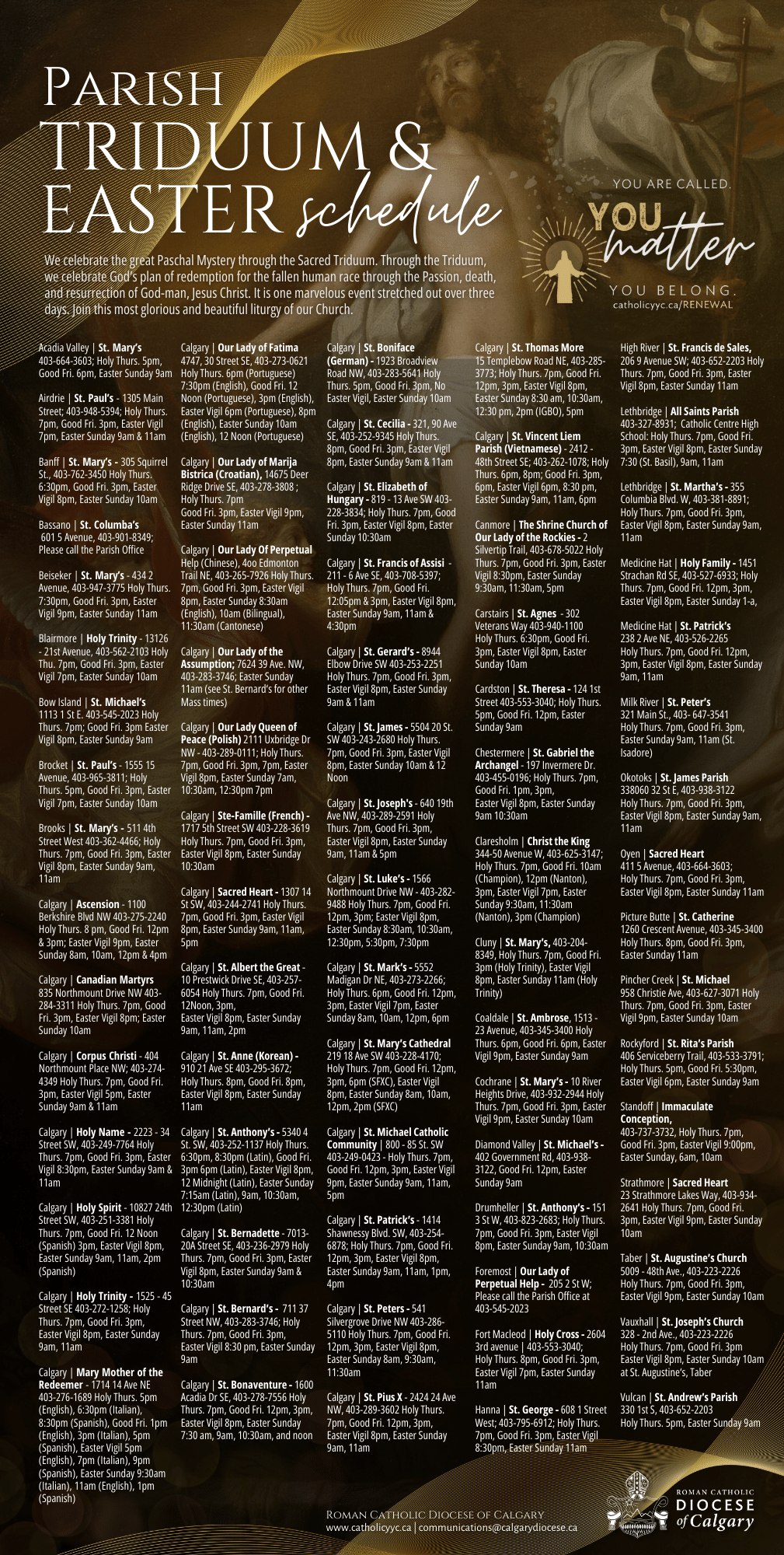
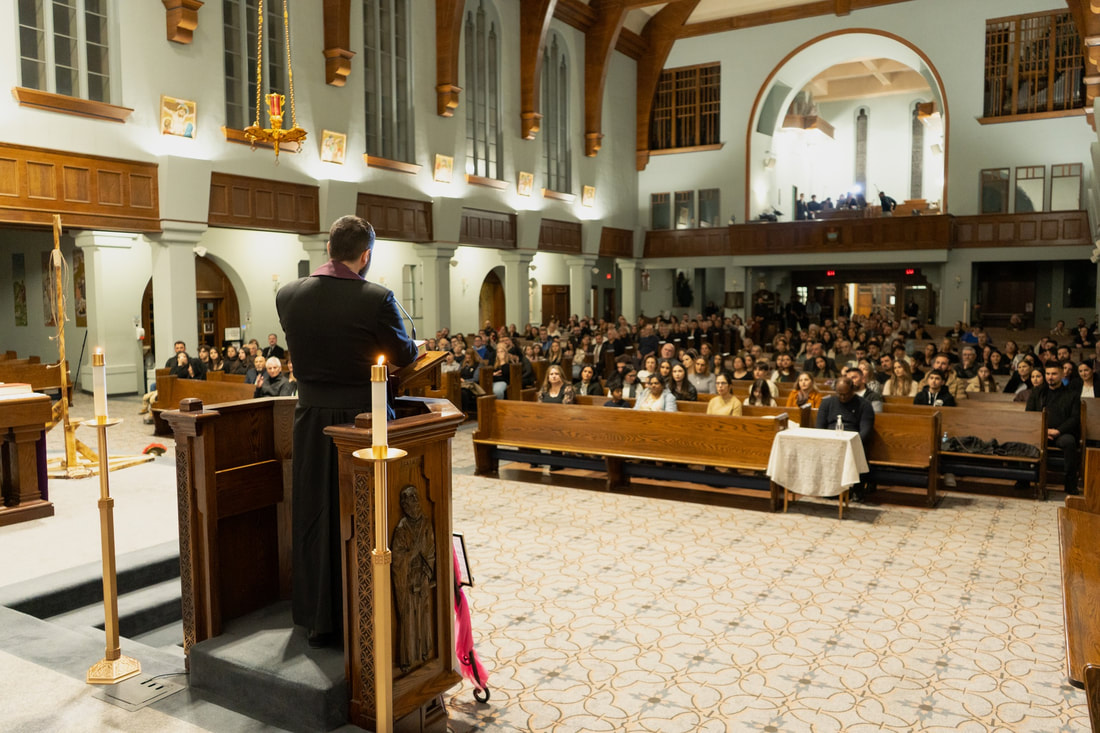
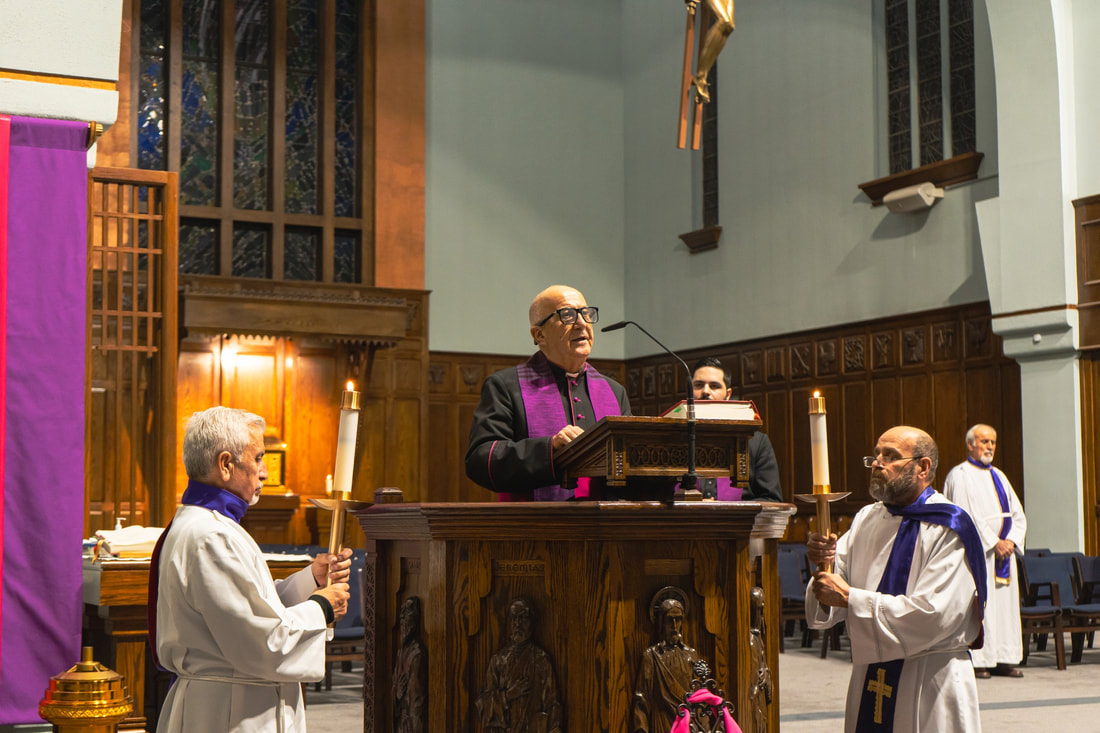
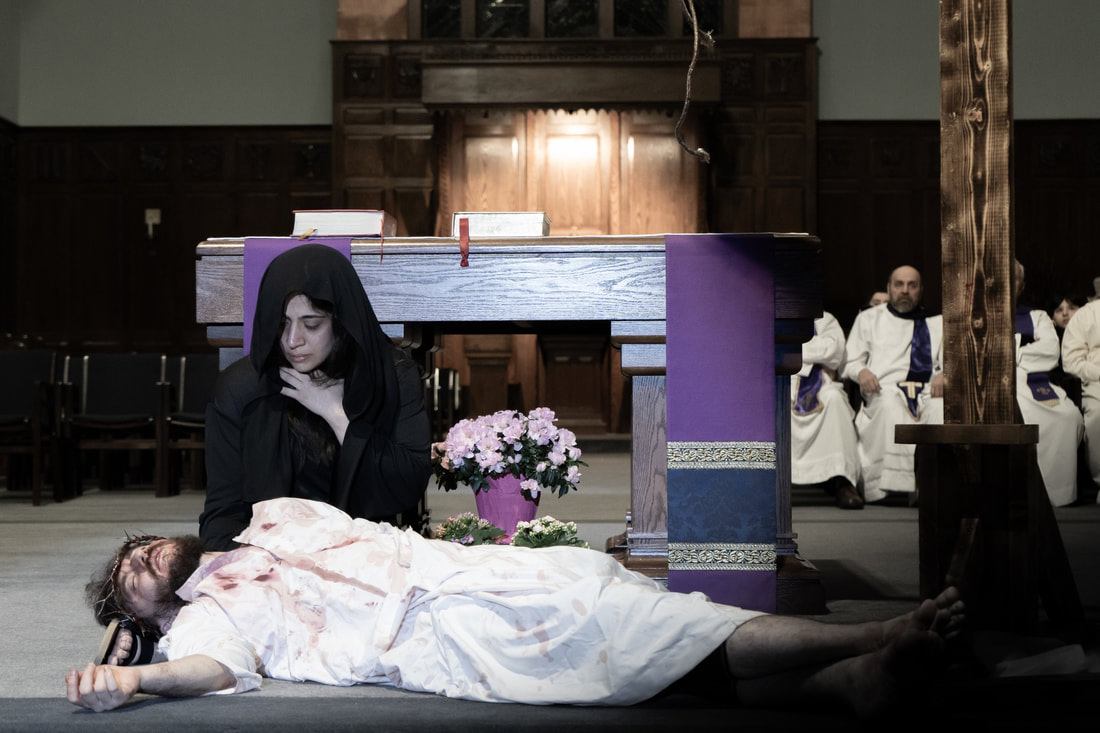
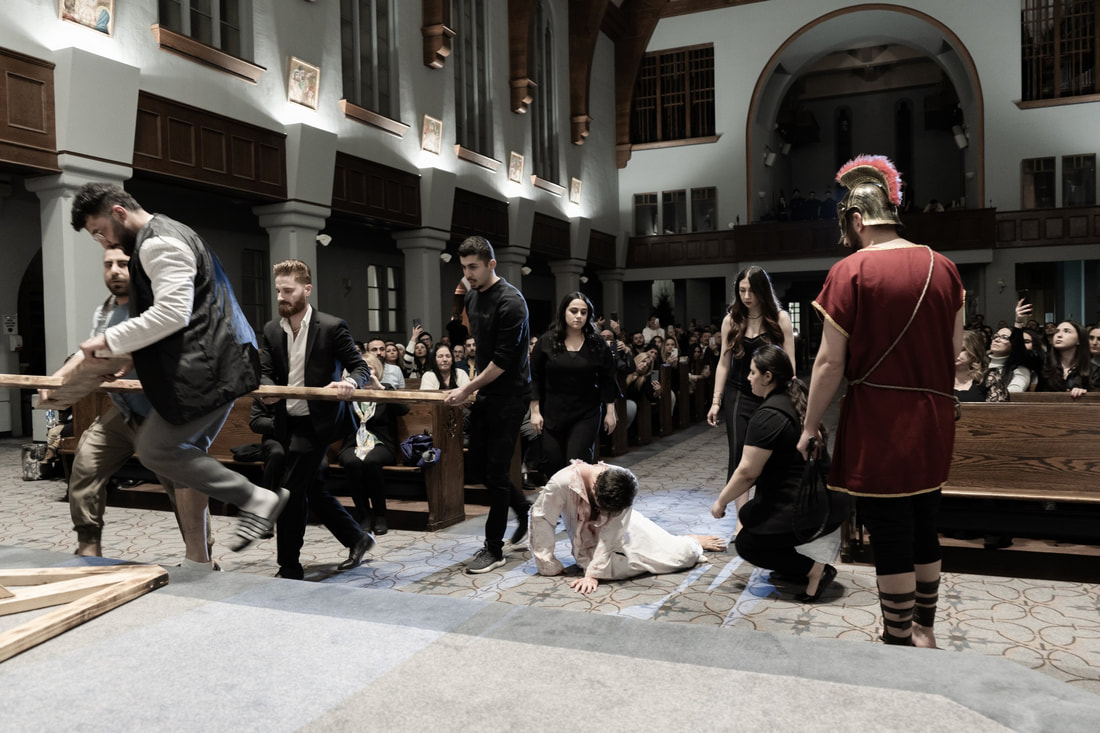
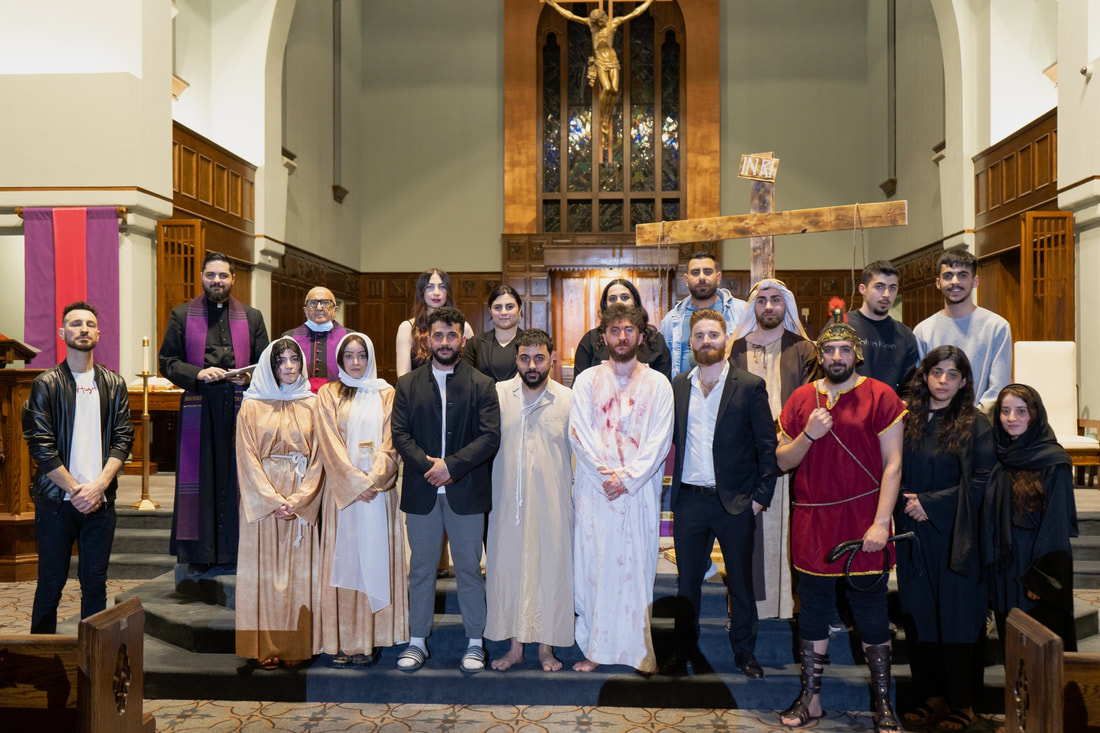
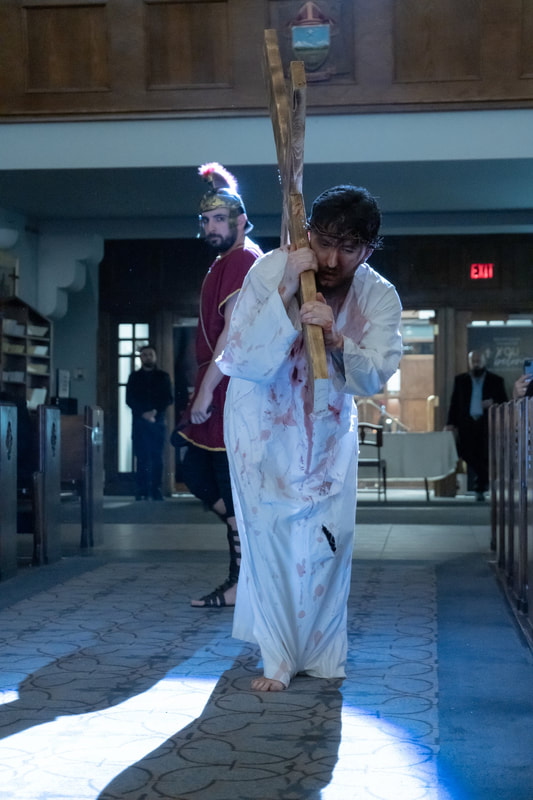
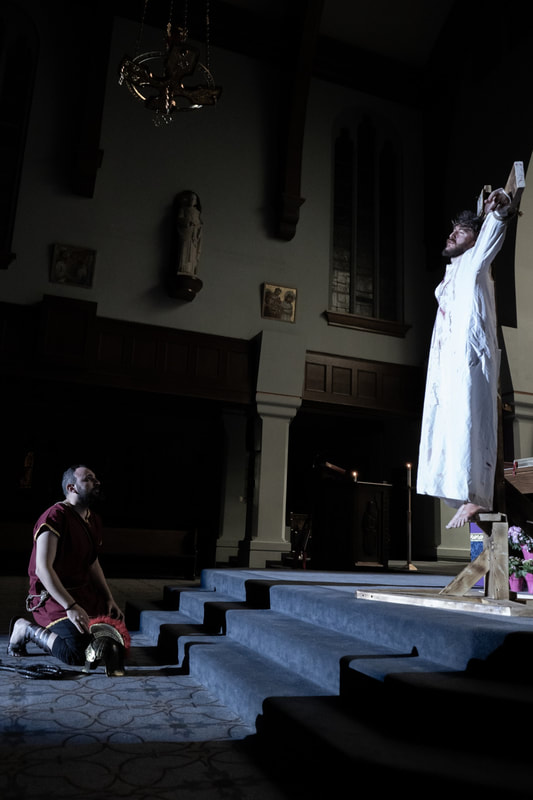
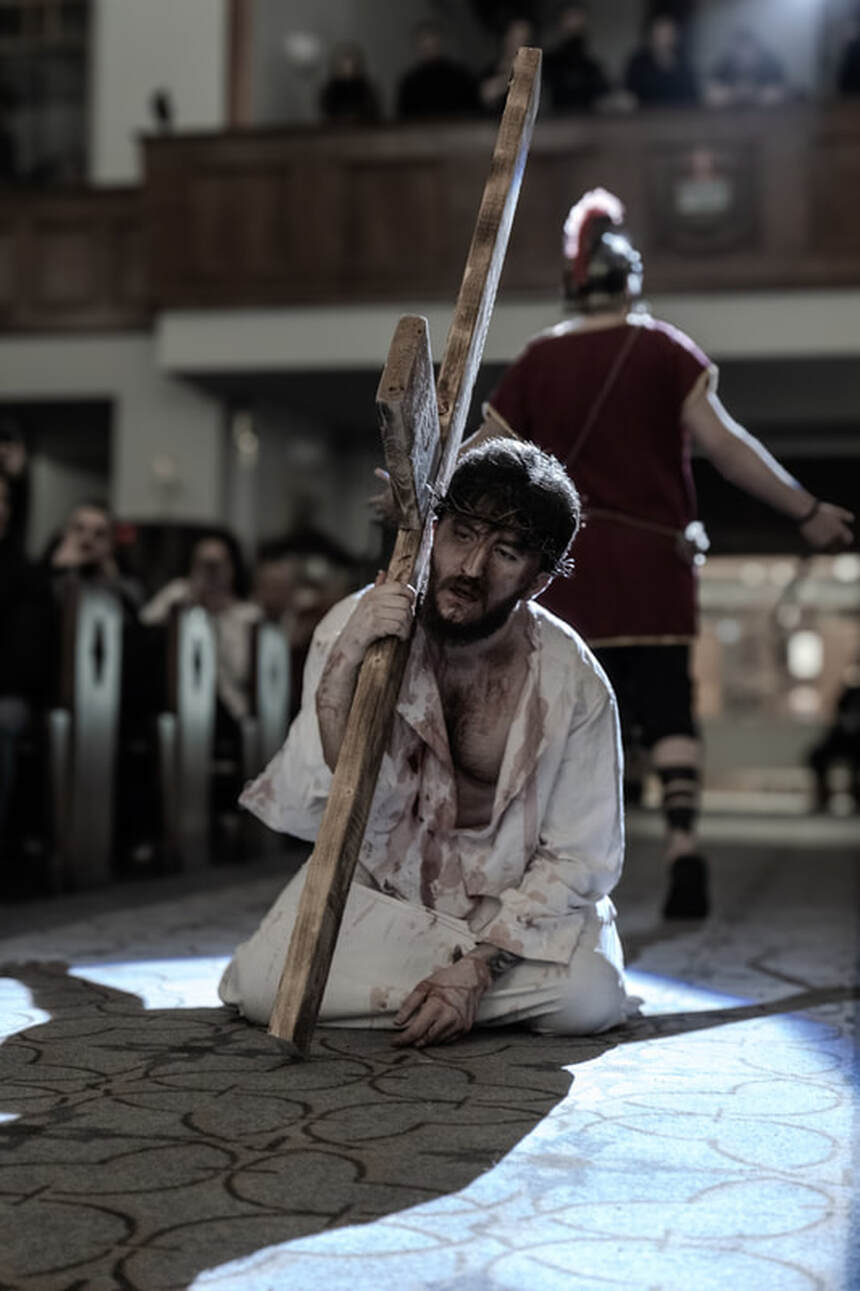
 RSS Feed
RSS Feed